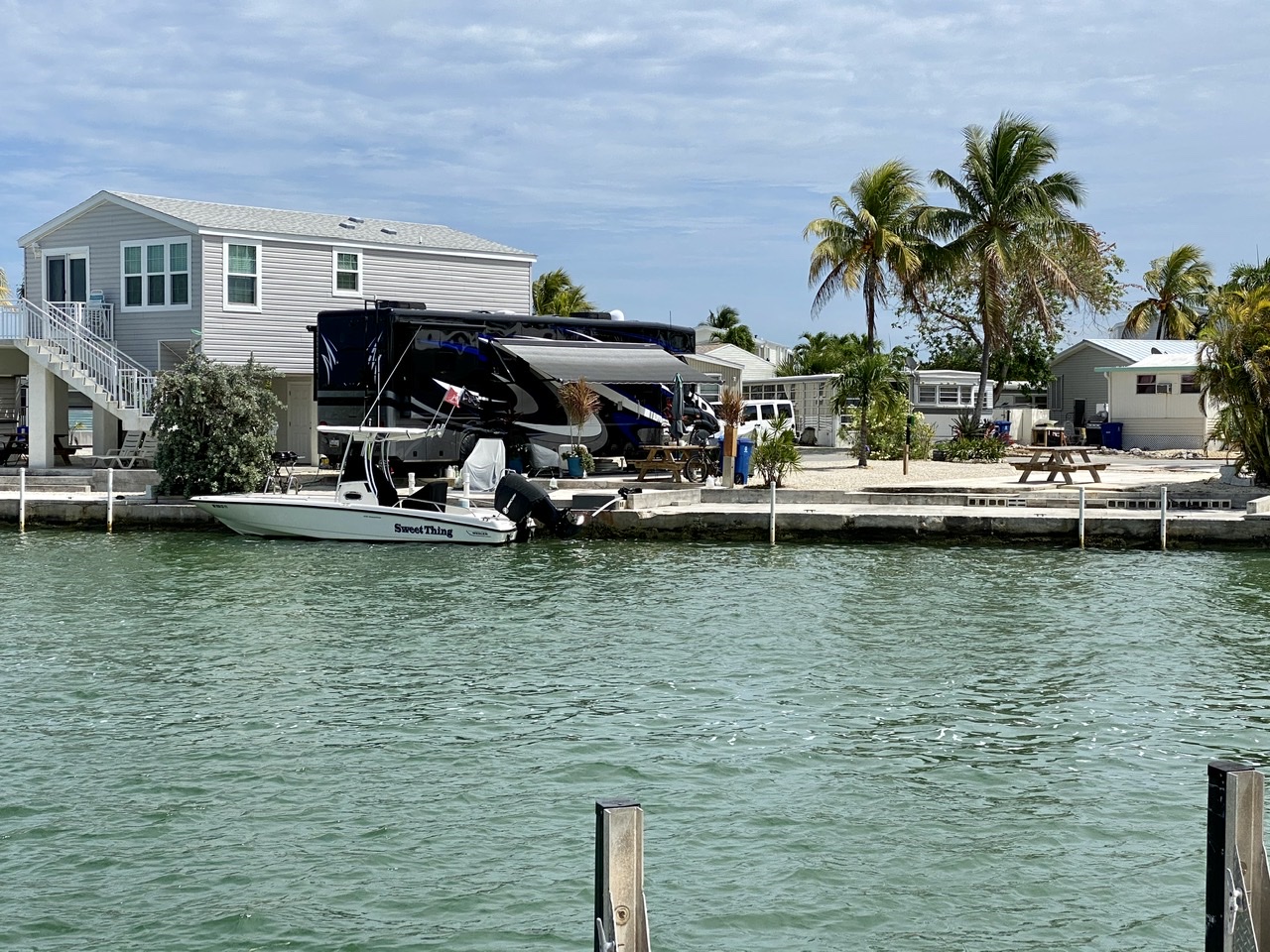When leaving the Denali RV Park & Motel, we had to hook up the Jeep outside of the park, so we stopped just down the road at a large pullout site on the left. It didn’t take us long before we were on the road. Lots of frost heaves kept our speed down but we didn’t mind going slow so that we could enjoy the scenery. We did not spot any wildlife, except a few rabbits and birds, but it was still an enjoyable trip with several stops along the way.
We stopped at the Alaska Veterans Memorial rest area so we could get some pictures for our scavenger hunt. Sandy and Ben were there at the same time so they volunteered to be in our pictures. There are several monuments dedicated to our Armed Forces, and someone had even placed flags and memorials at some of the monuments. The preferred gift seemed to be bottles of beer at the base of a monument. We also had time to stop at the North View Point of Denali State Park so we could also get a photo of Randy looking through a view finder for our photo scavenger hunt. This view finder was child size so the only way to look through it was to hang your head upside down to view. It made for an unusual picture but all of the other view finders were being used—by kids! It was a little scary there because of the multiple signs about an aggressive grizzly bear in the area; a sow with cubs. The trail was closed and there were signs everywhere including at the overlook and at the bathrooms. We did not linger!

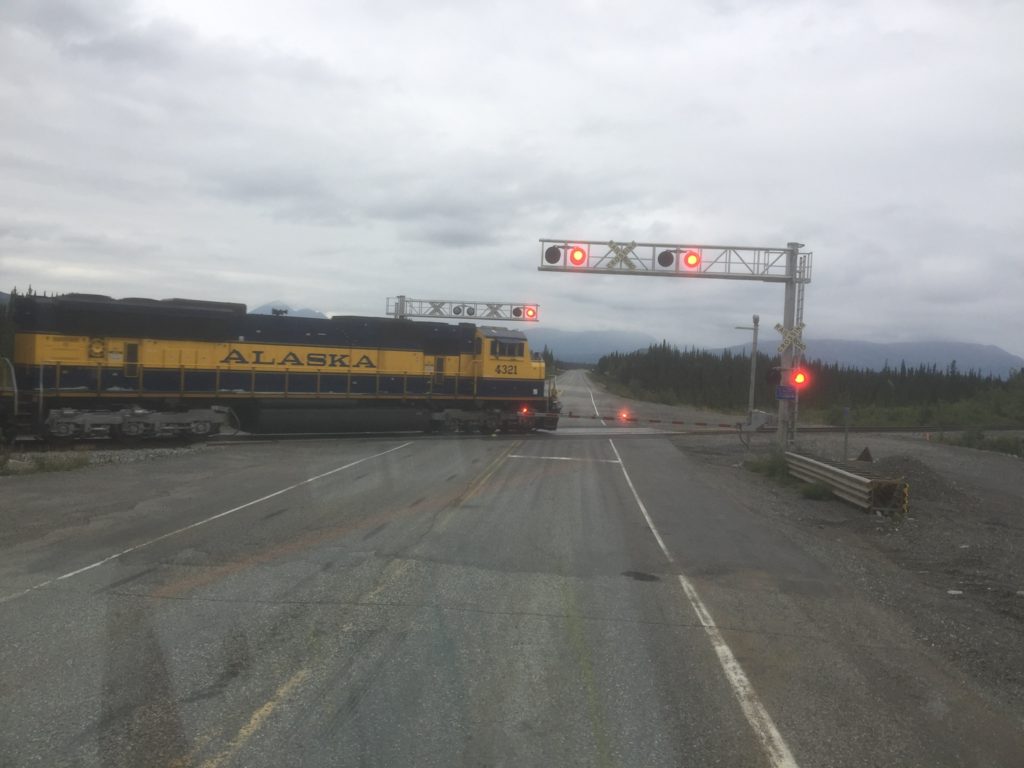
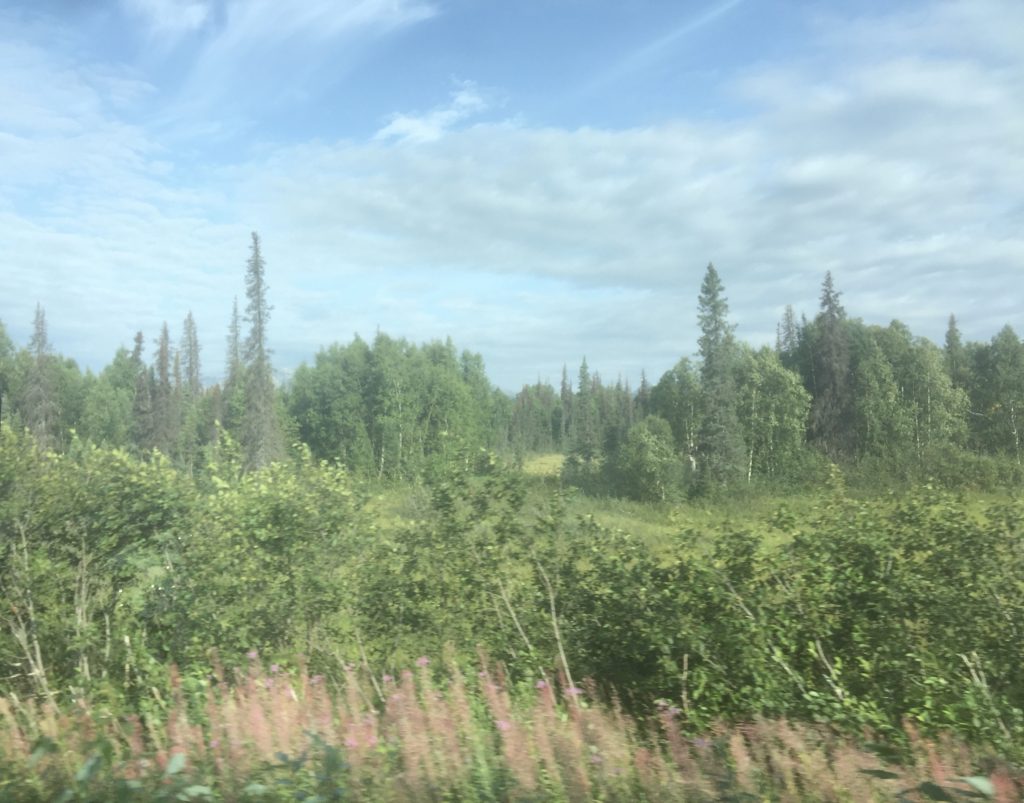
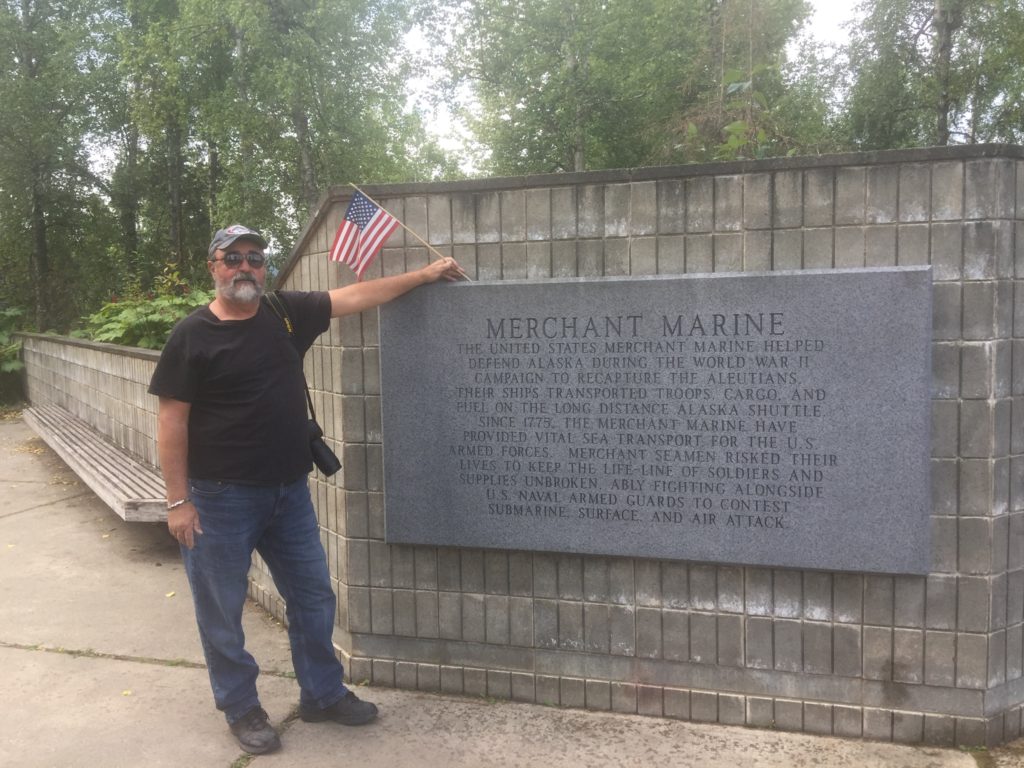
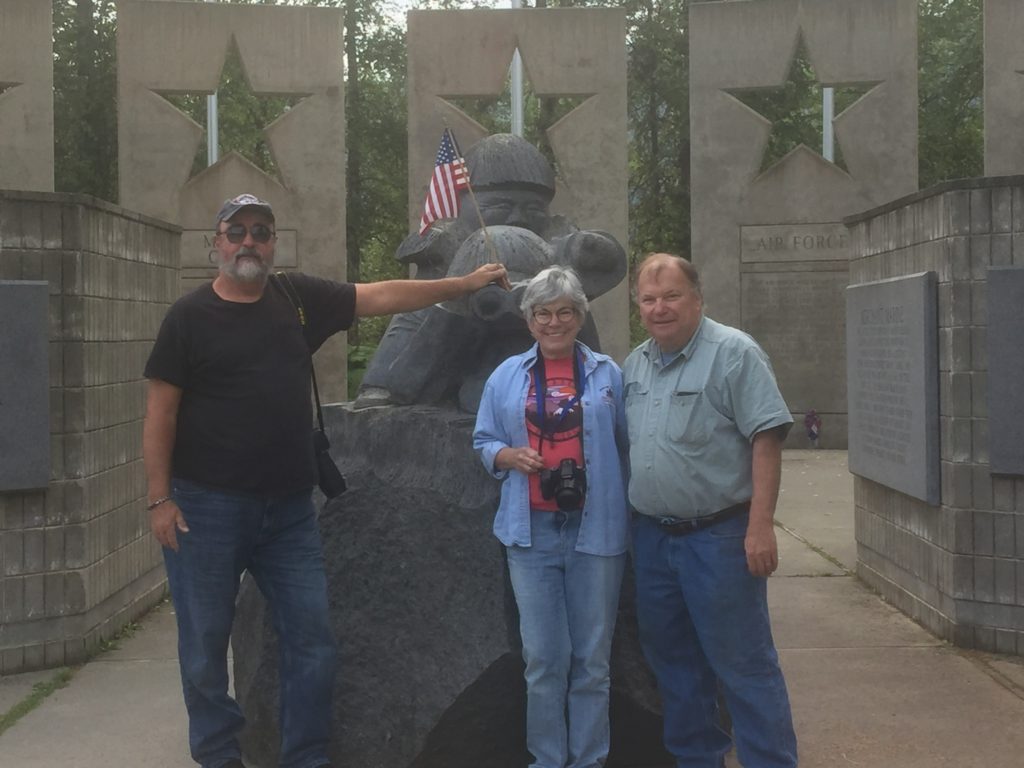
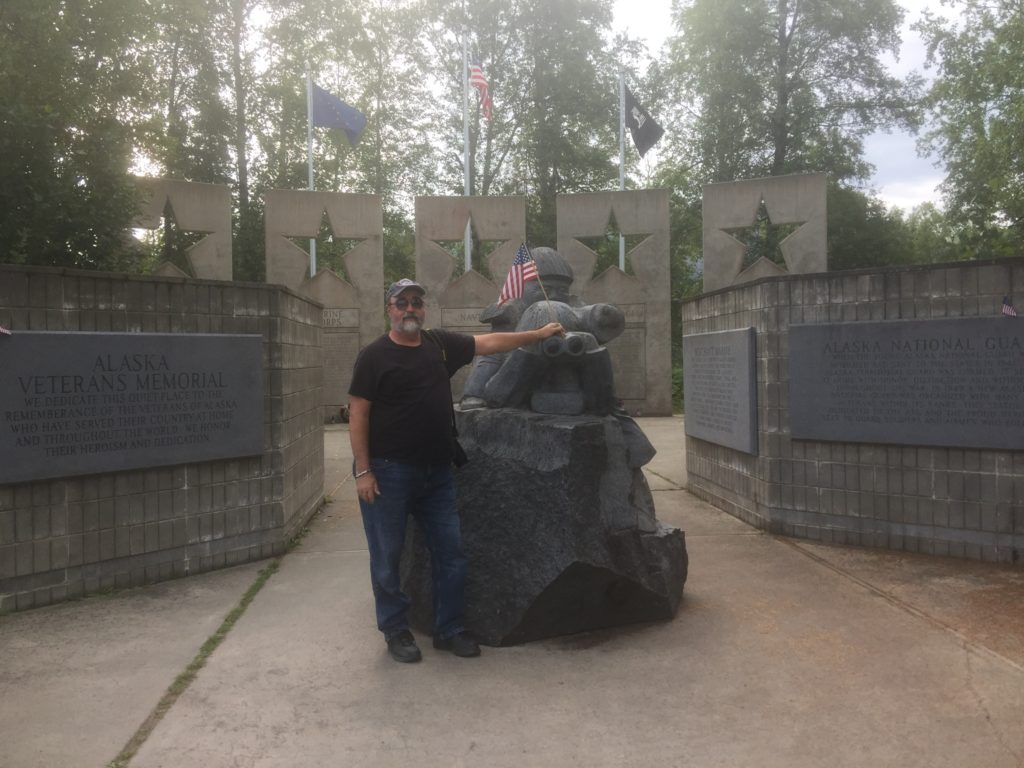
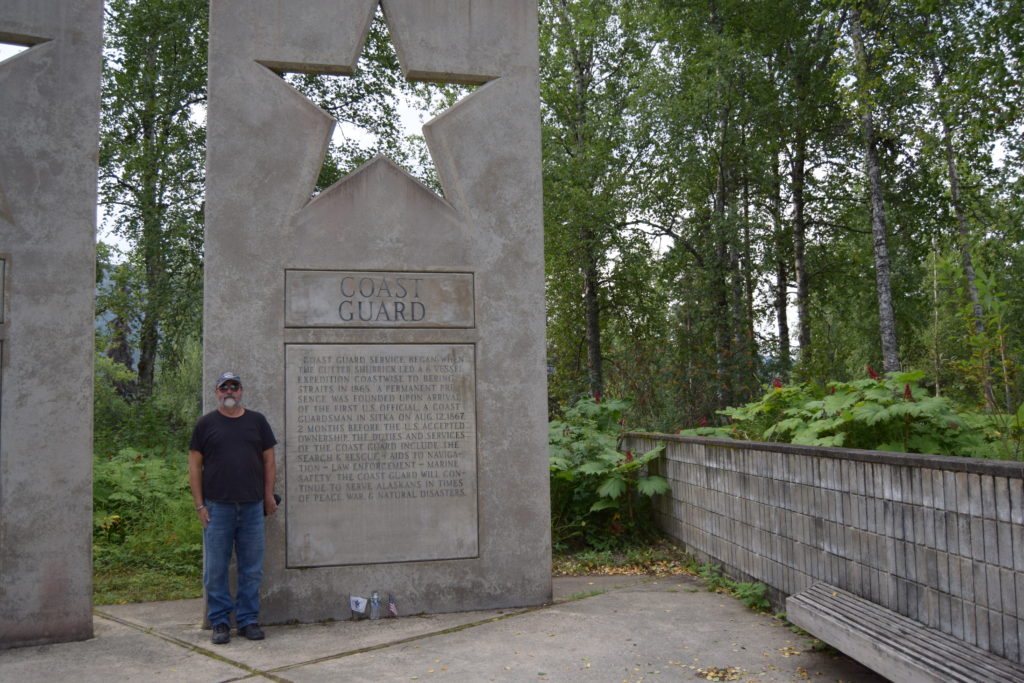
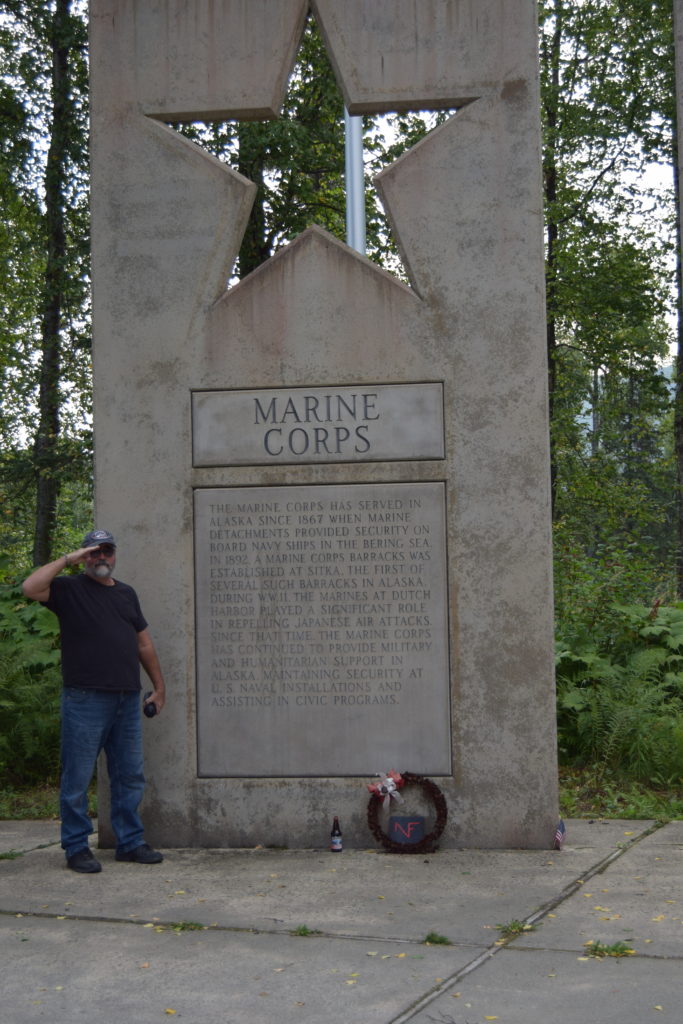
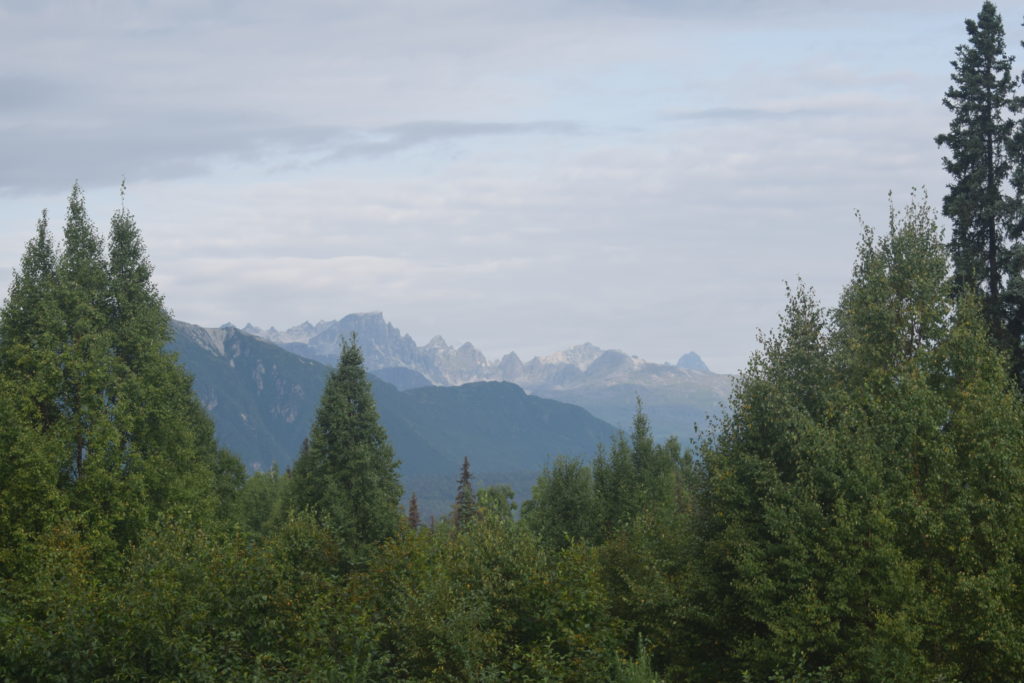
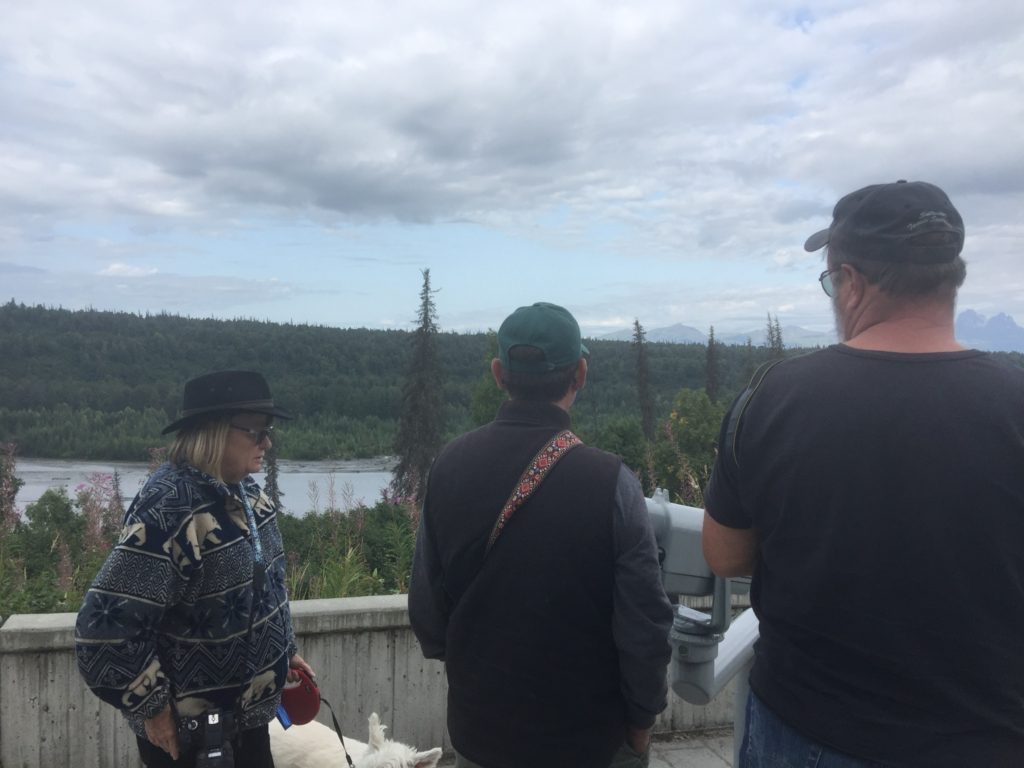
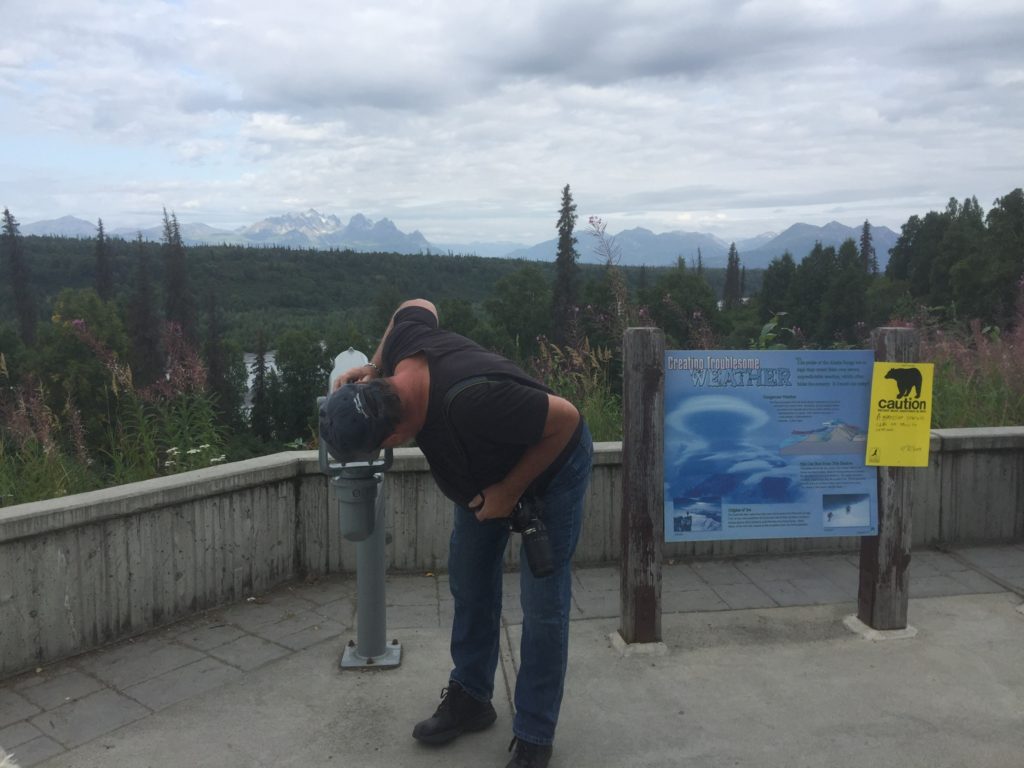
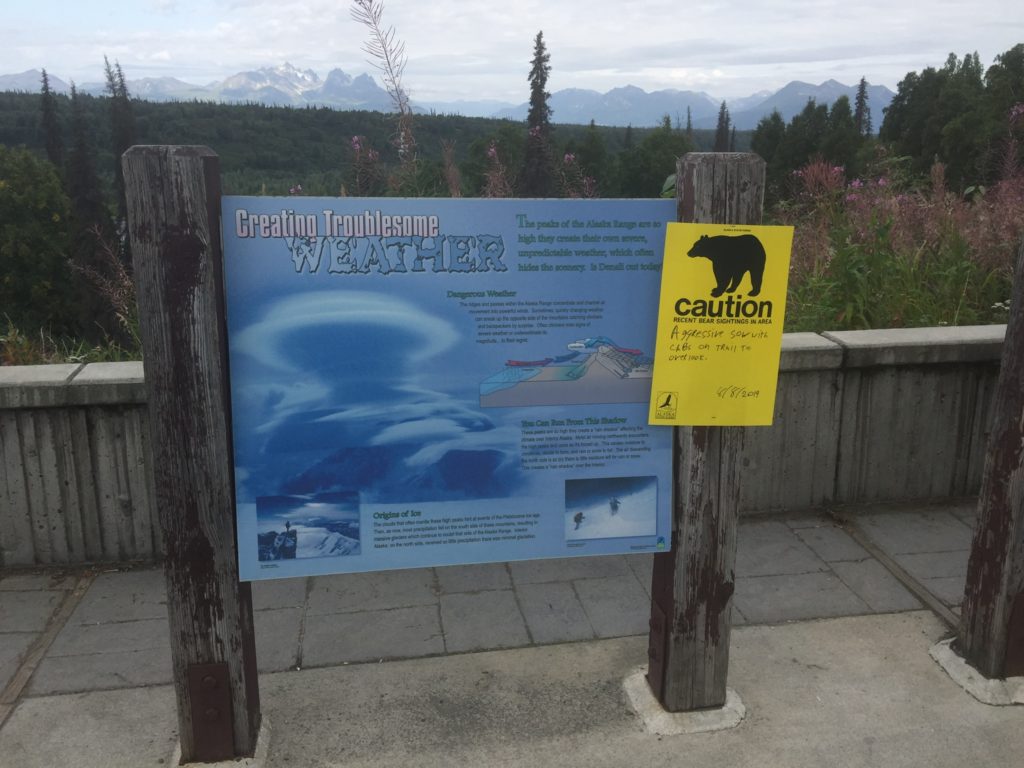
We stopped for fuel outside of town to top off our tanks. The price was a little better than in Anchorage @ 2.82. The Golden Nugget RV Park was pretty full with our caravan and an Adventure caravan. The spots were tight and only 30 amp power again. We unhooked outside of the park and John quickly gave us our assigned spot. We had to move the picnic table in order to fit so it was a good thing we had disconnected. Mitch and Kate were already in the park, next to us; and others were pulling in by the time we were set up. We helped move more picnic tables!
After we were set up, we spent some necessary time stocking up on food and essentials before exploring the city. The next day instead of going to the planned Alaska Native Heritage Center, we opted to drive to the Alaska Wildlife Conservation Center and the Begich, Boggs Visitor Center in Girdwood, Alaska. They were both listed as optional stops on our next scheduled drive to Homer, but we decided we would rather spend more time at these stops than a quick visit during our next move. It was a good decision. We were lucky and got to see several bears during their morning program at the Wildlife Center. I think the bears are conditioned to come to the fence when the microphones are turned on. They don’t get fed until the evening program, but I assume they still come just to make sure. We got to see several grizzly or brown bears as they are called here, and several black bears. One black bear was in a separate area and was snoozing in a tree. We also got to view elk, black-tailed deer, musk ox, wood bison, foxes, coyotes, moose and porcupines. I much preferred seeing the animals in the wild, but most of these animals would have died if someone had not rescued them. Unfortunately, that means they probably could not survive on their own so they must live where humans can take care of them. They all appeared to be in good health. We were able to get some good photos of the bears and porcupines. We did not stop to look at most of the other animals, other than a quick walk-by or drive-by, as we had seen most of them several times on our trip.
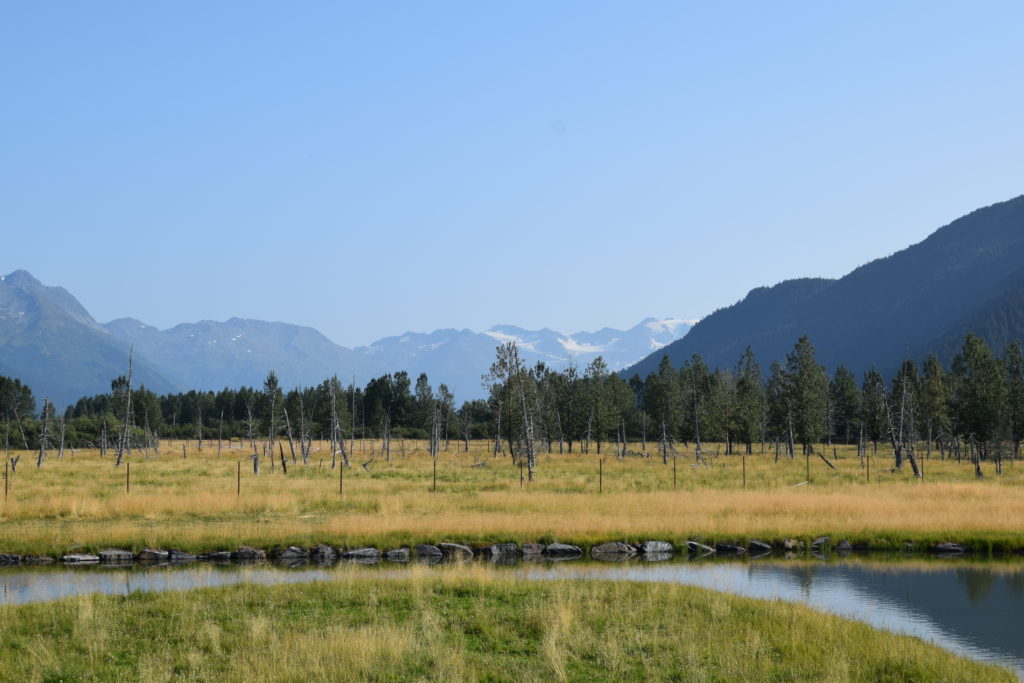
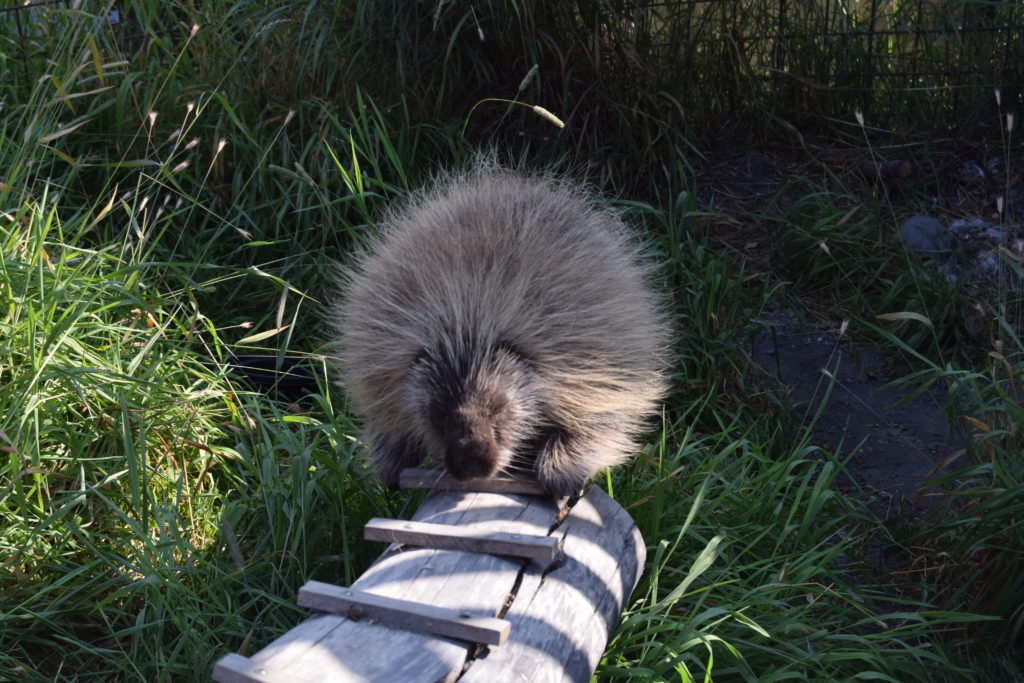
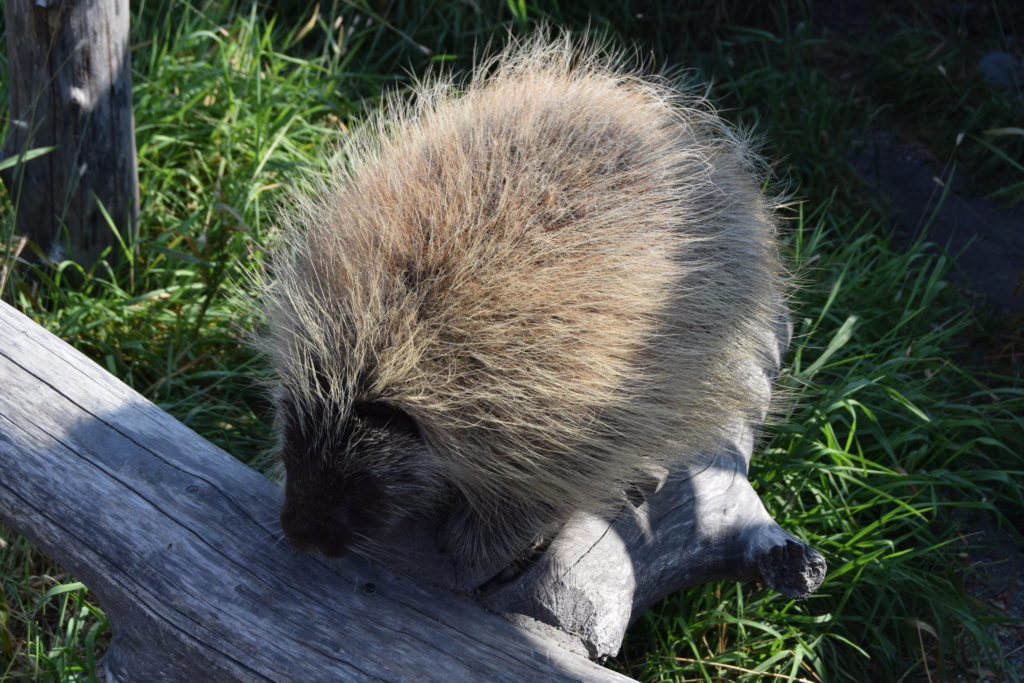
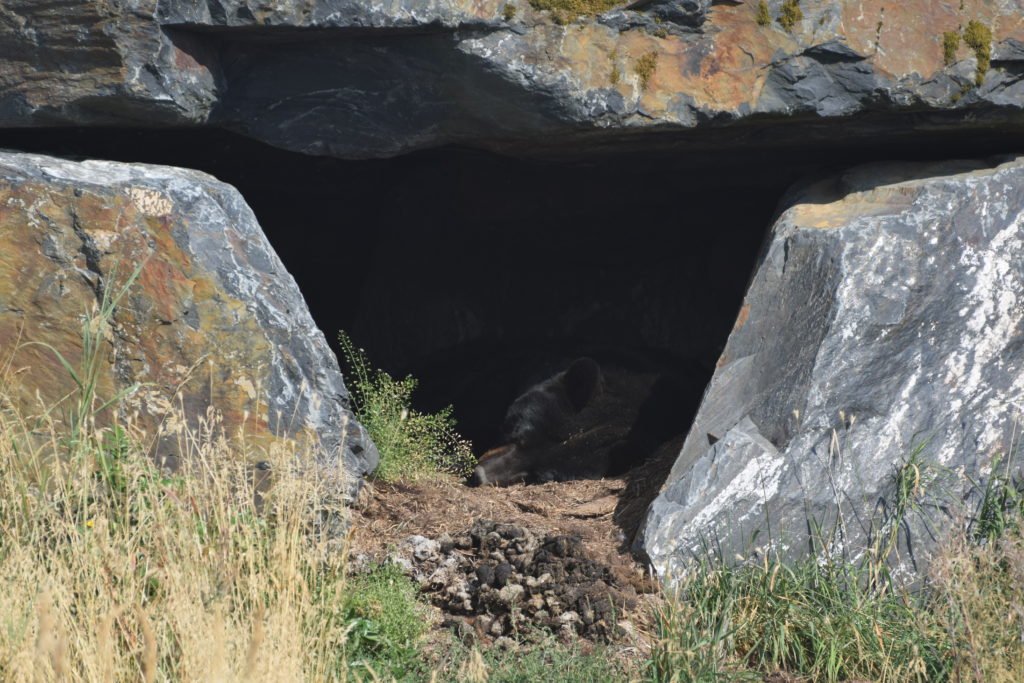
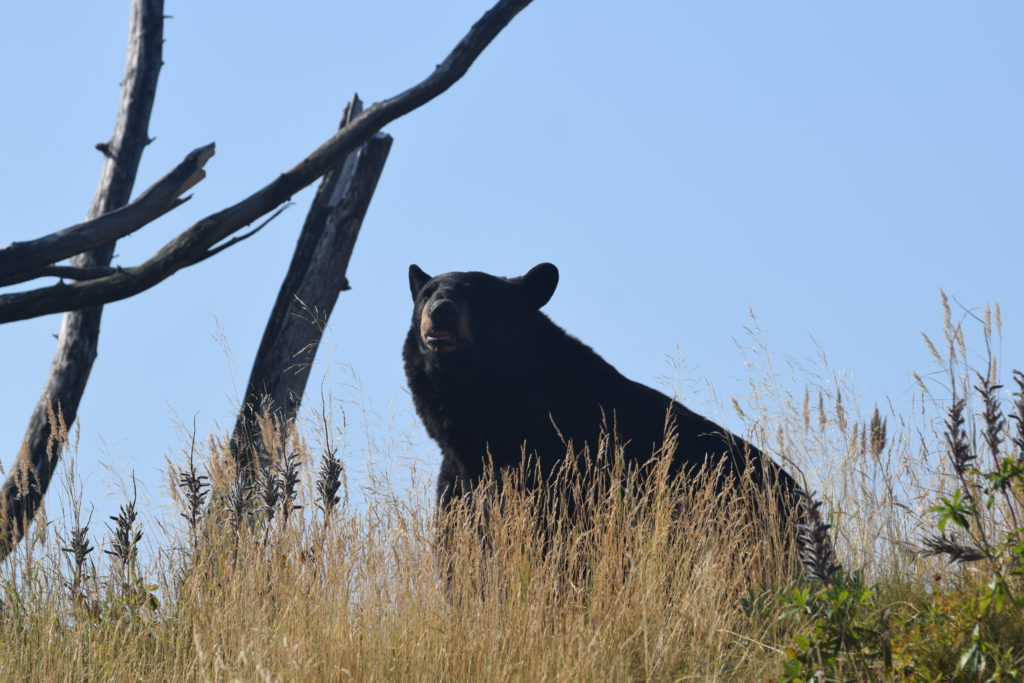
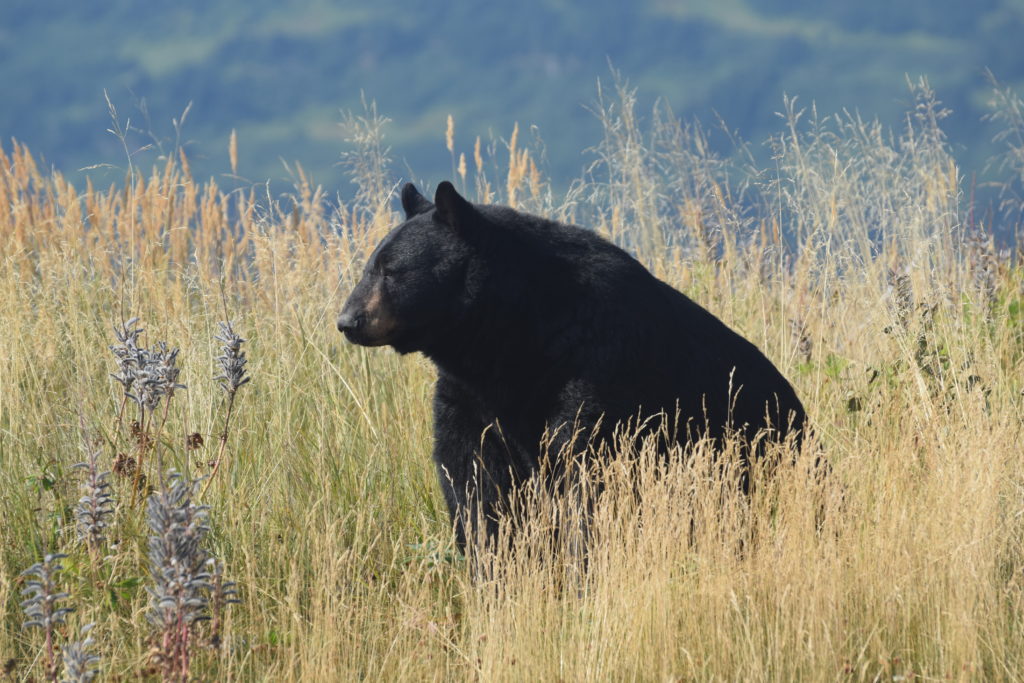
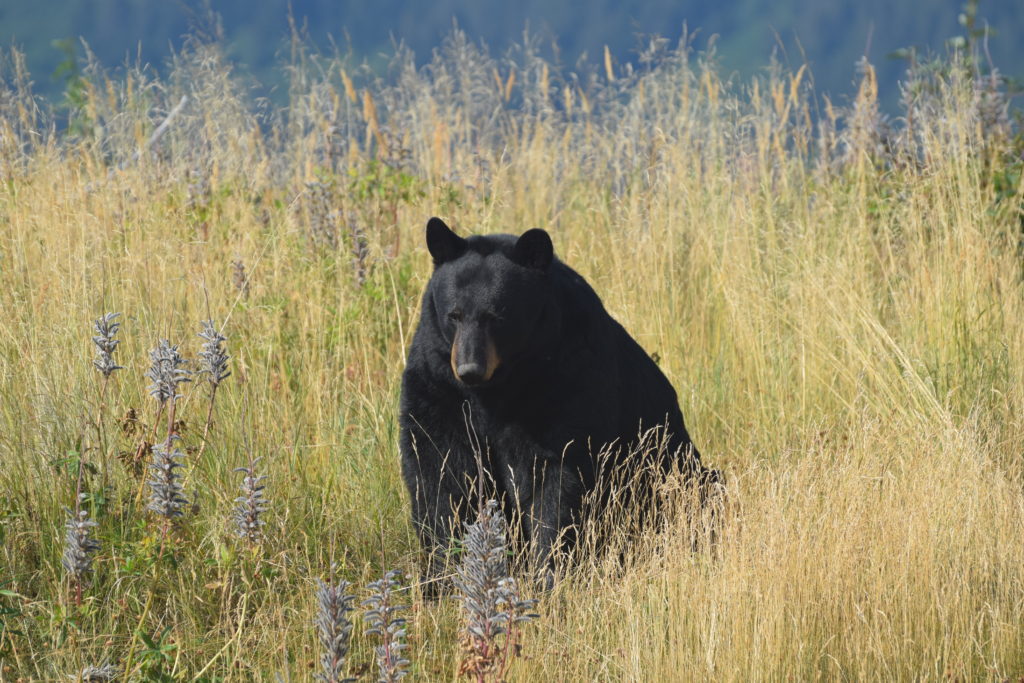
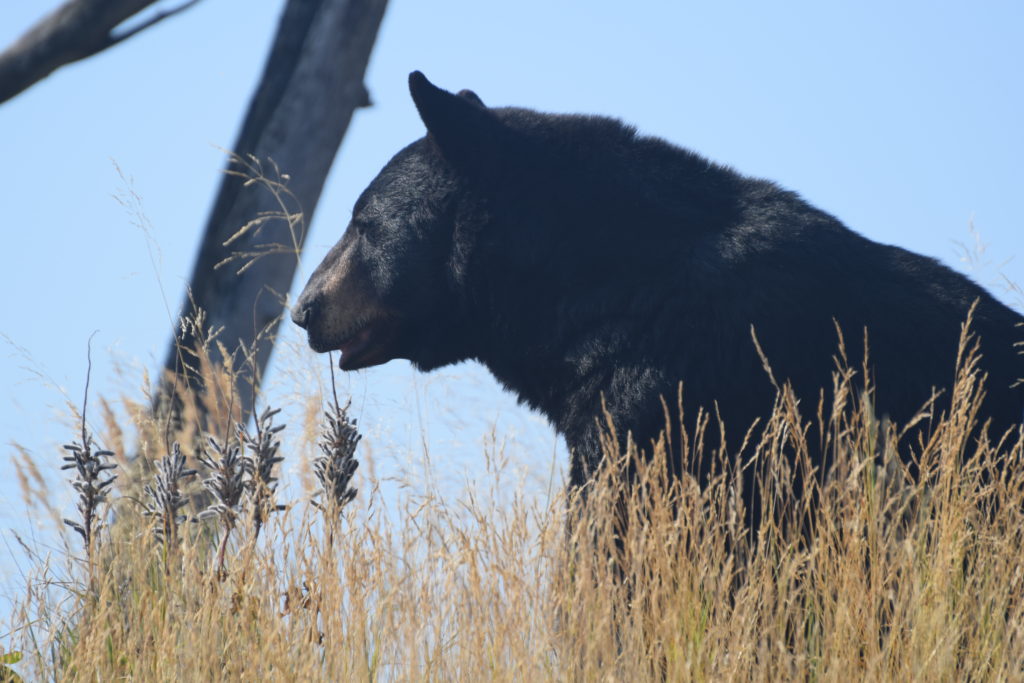
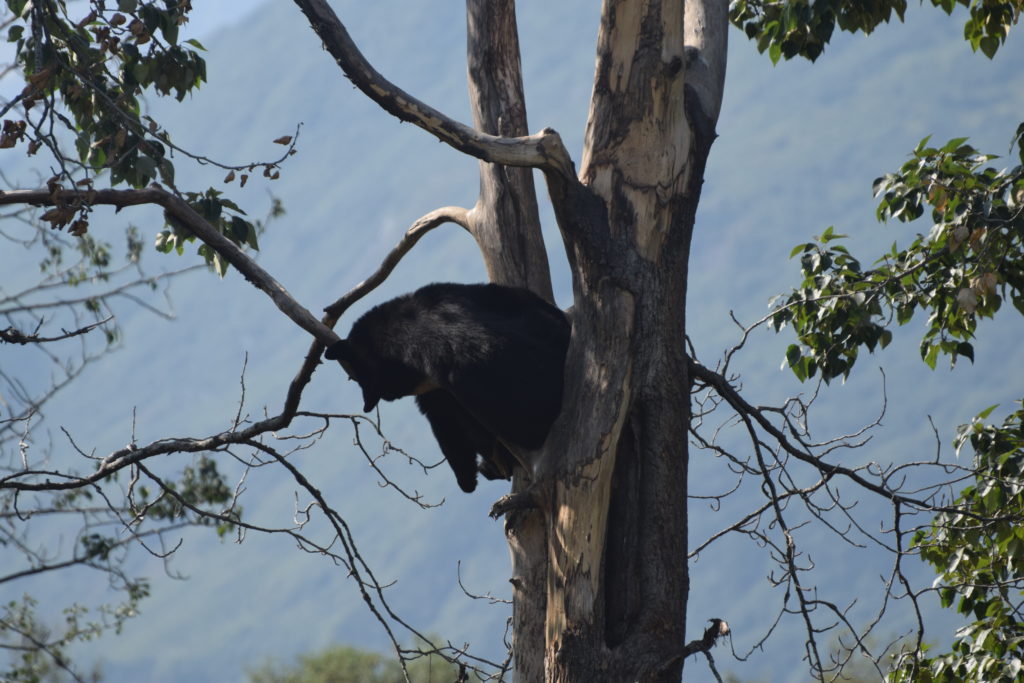
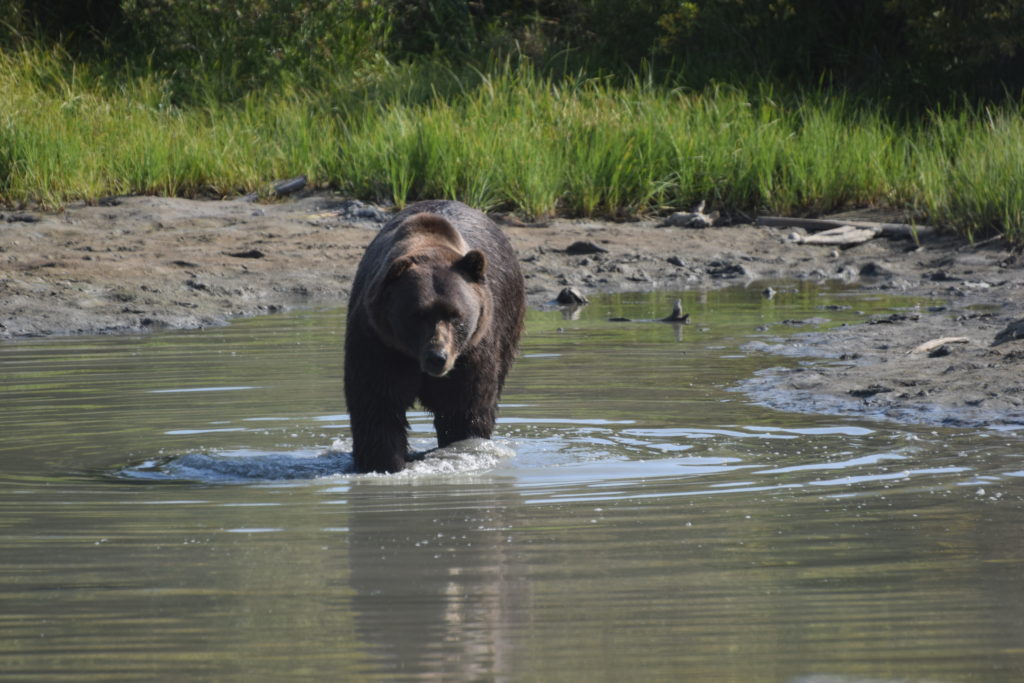
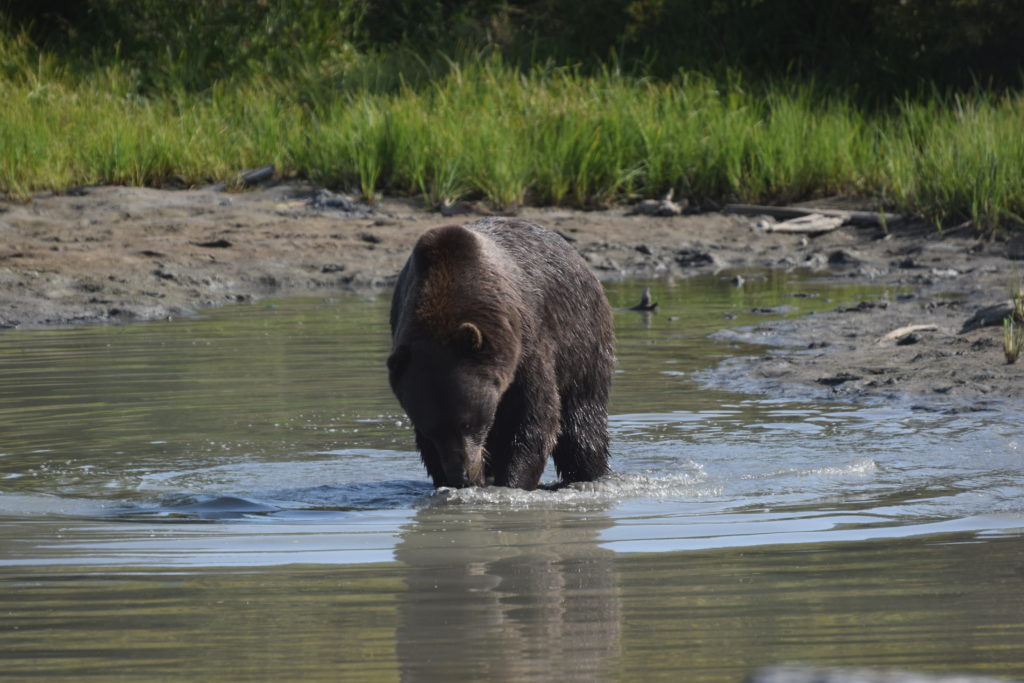
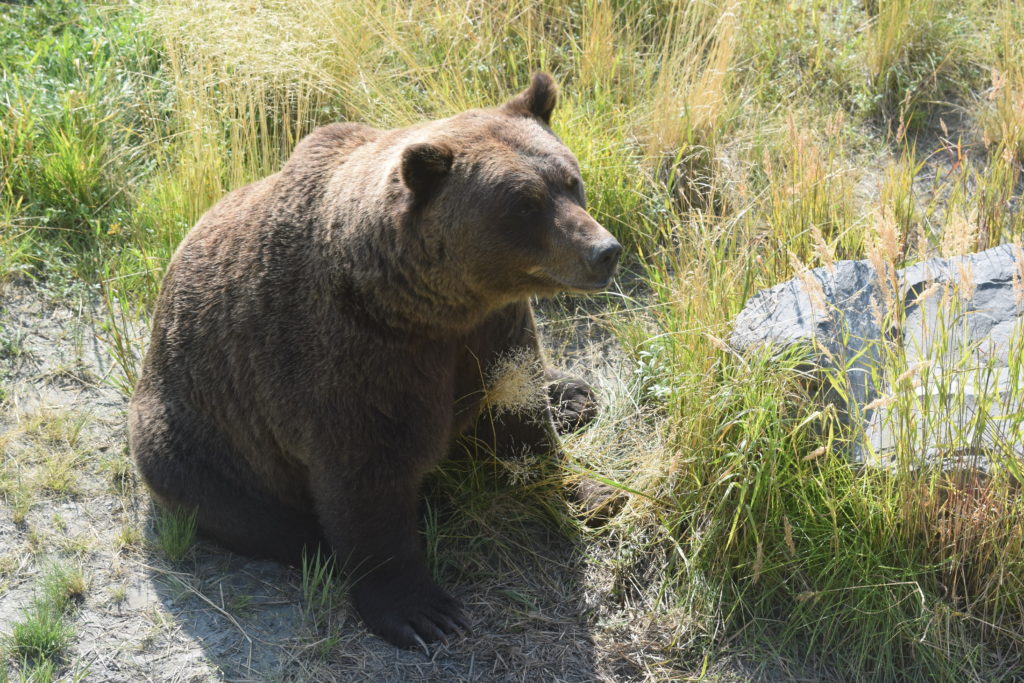
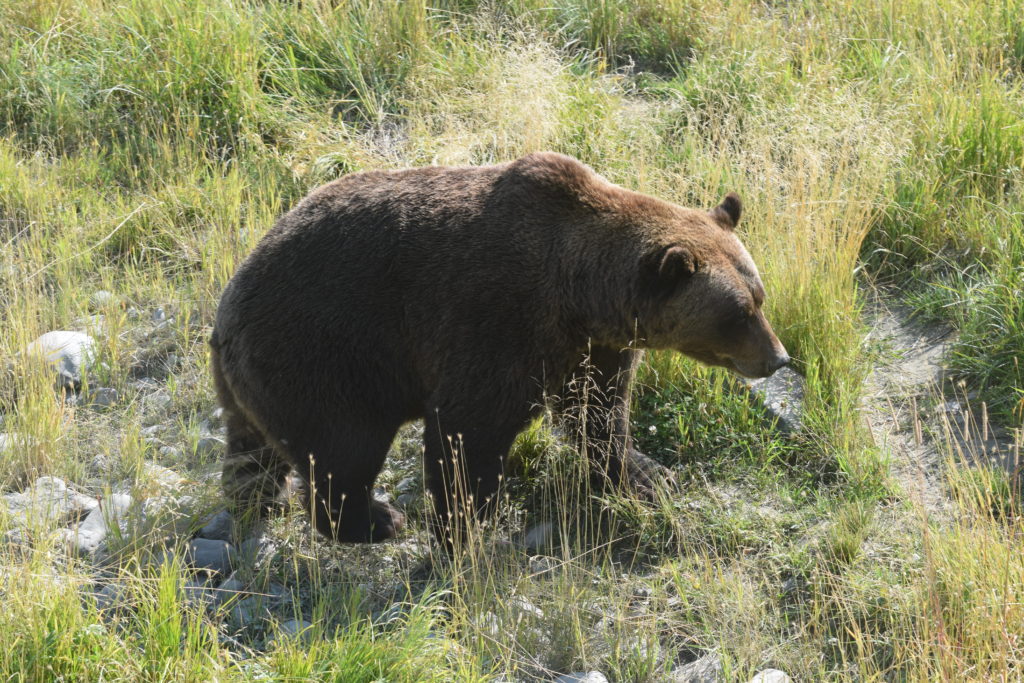
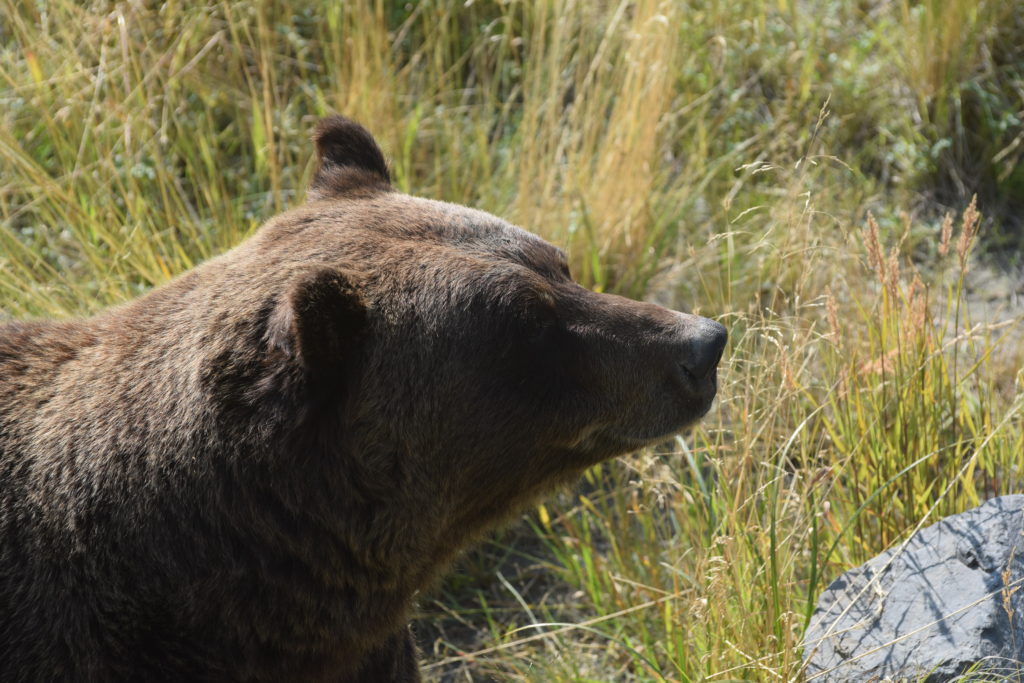
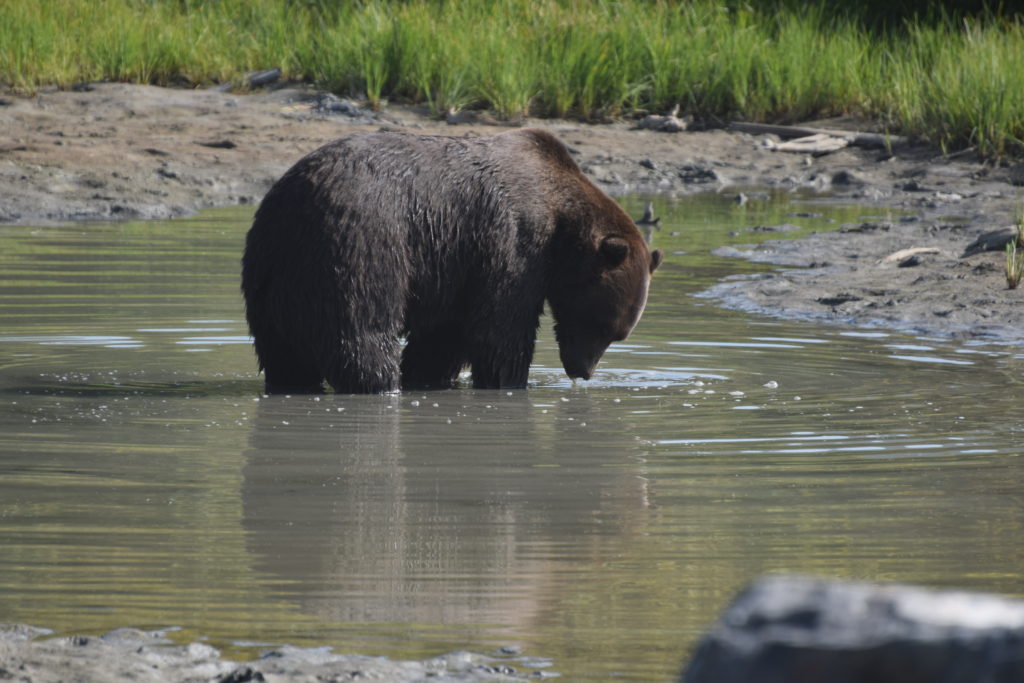
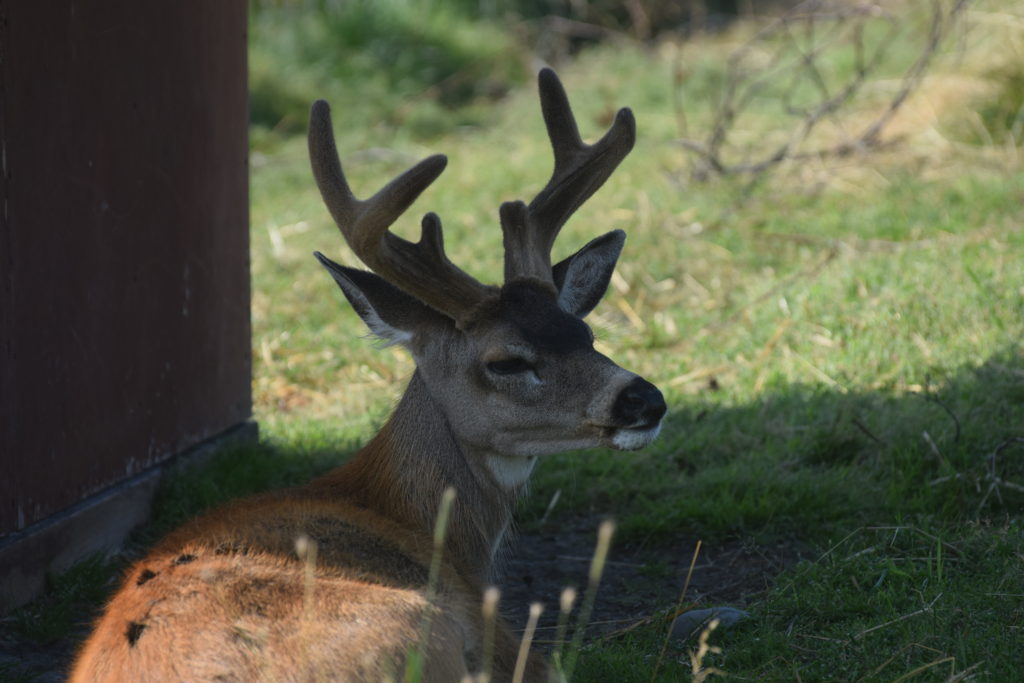
We especially liked the Begich, Boggs Visitor Center at Portage Glacier. The center is built upon the terminal moraine left behind by the Portage Glacier. It is named in memory of Congressmen Nick Begich of Alaska and Congressmen Hale Boggs of Louisiana, both who were killed in a 1972 plane crash while they were en-route from Anchorage to Juneau. Randy could use his Senior National Parks card instead of us having to pay the $5 entrance fee. While there we watched the film, “Retreat and Renewal: Stories from Alaska’s Chugach National Forest.” We could have spent an entire day looking at the archives and watching the short videos available but did not stay too long as we knew we had at least an hour drive back to Anchorage. We did take time to go through the first tunnel heading to Whittier, Alaska, but turned around in the large parking area before the expensive toll for the second, longer tunnel. The views from this parking area were gorgeous and Randy thought the best view of glaciers on the trip. The second Whittier tunnel, the Anton Anderson Memorial Tunnel, is a long, one-way tunnel with high toll fees. It is the longest tunnel (2.5 miles) in North America, and the first designed for -40 Fahrenheit temperatures and 150 mph winds. It runs in opposite directions each half hour so it would have taken us considerable time to make a round trip. It normally needs to be aired out between trips using jet turbine ventilation. It is also unique in that its design enables cars to drive over the railroad track which saved tens of millions of dollars in constructing costs.
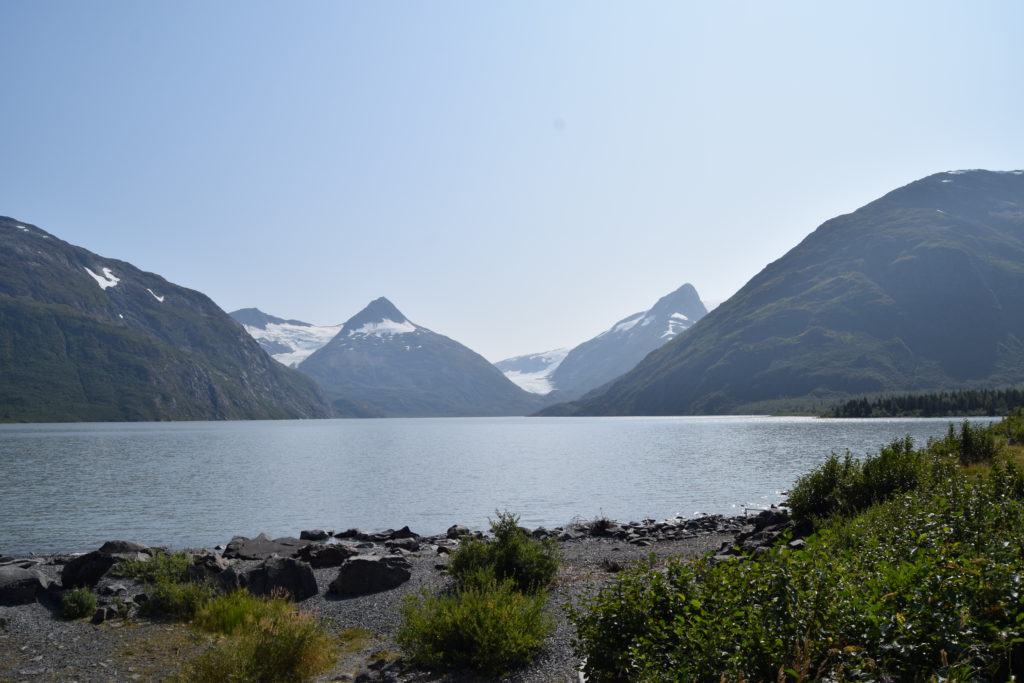
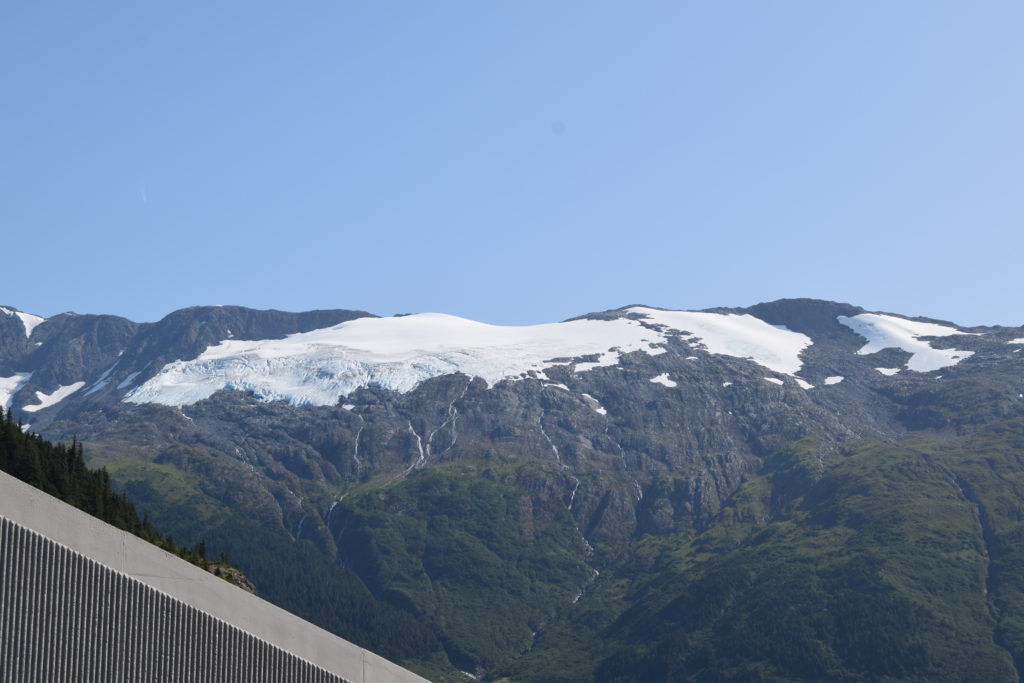
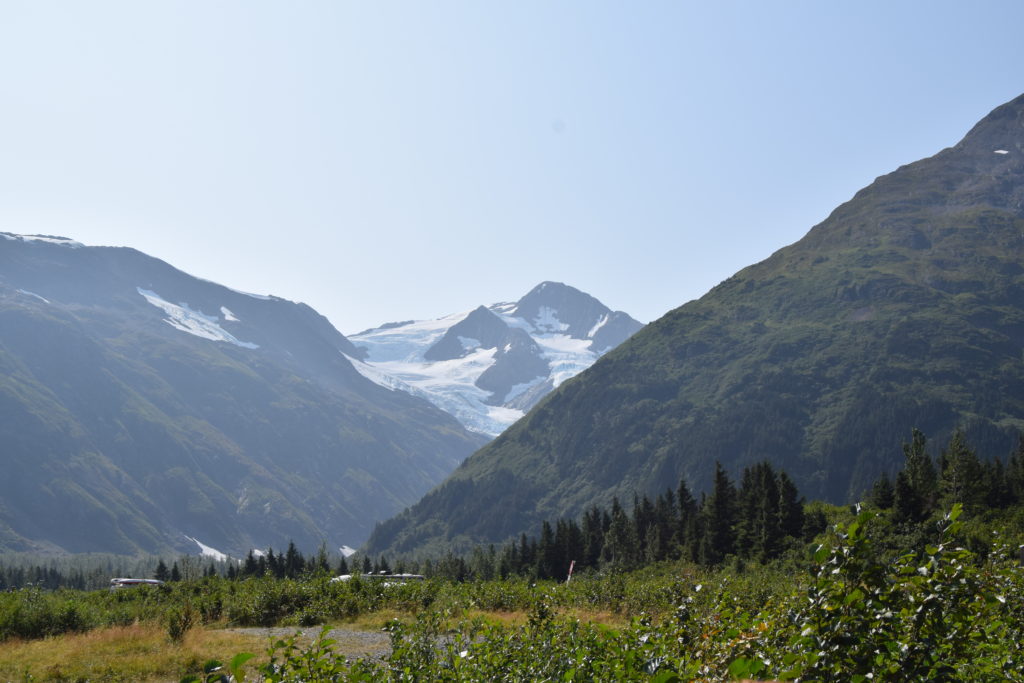
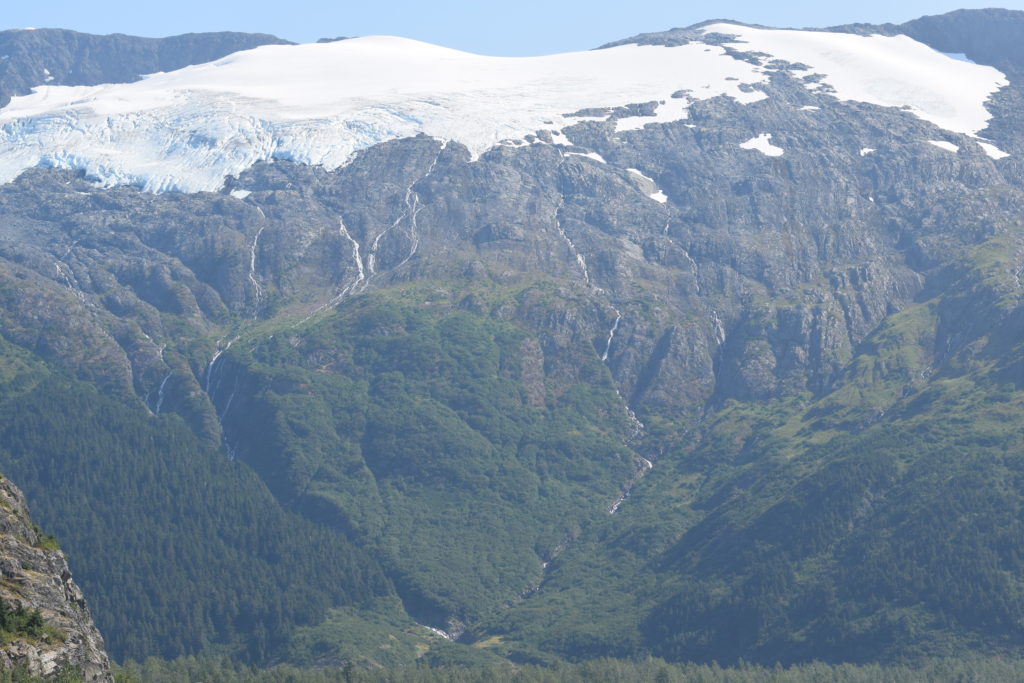
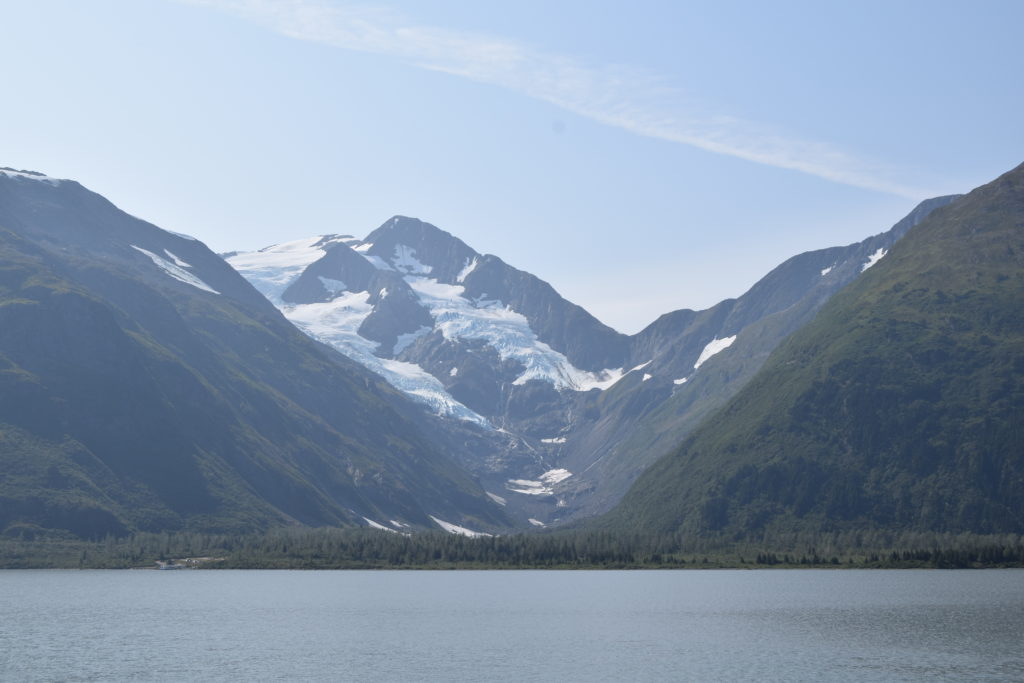
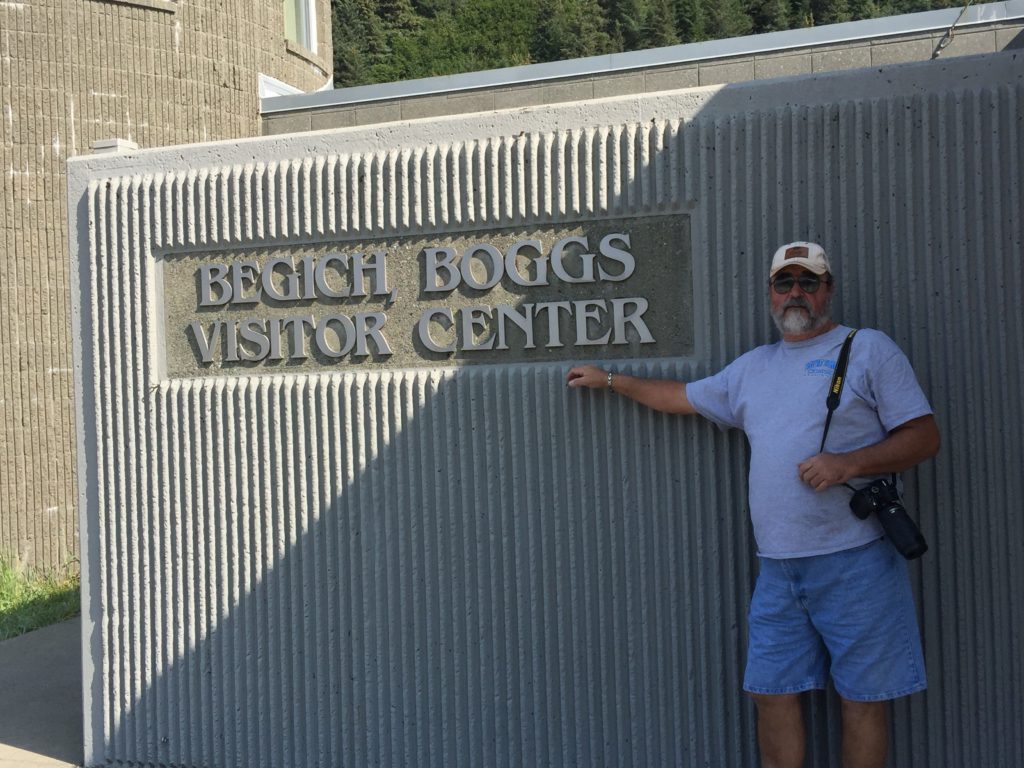
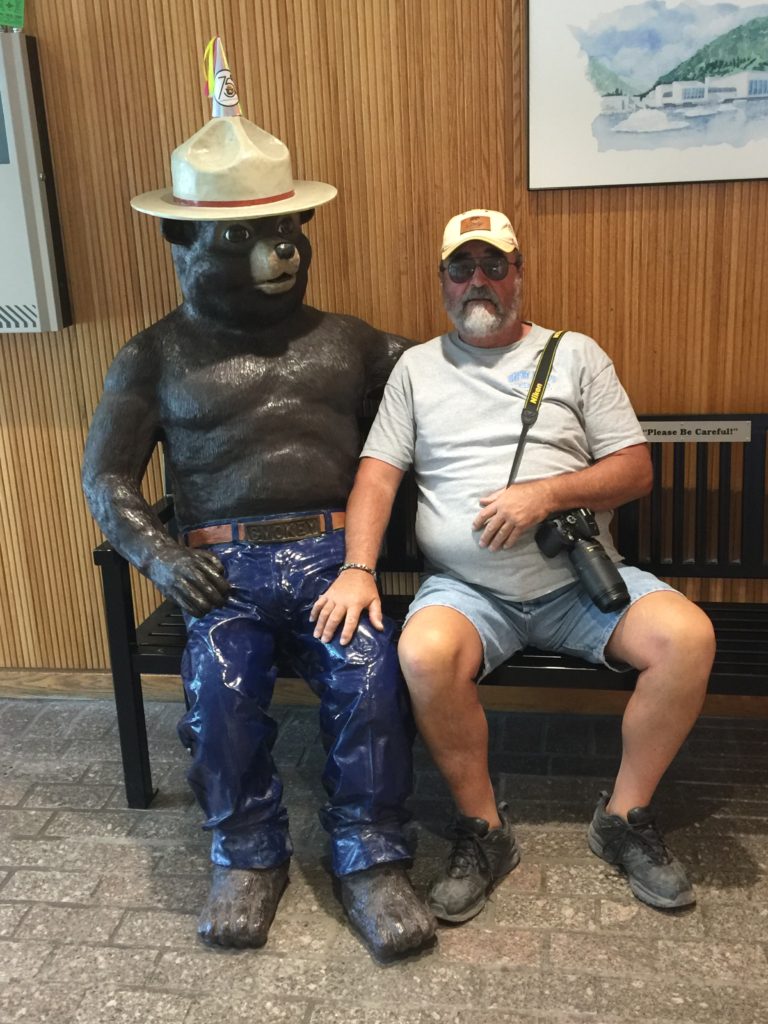

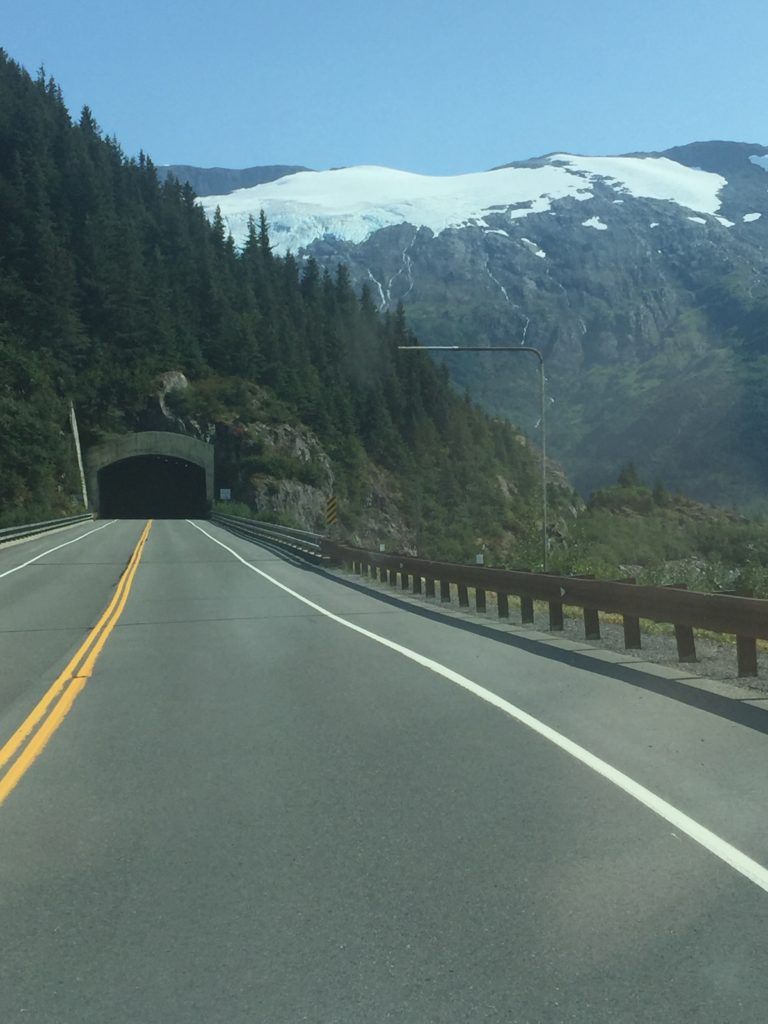
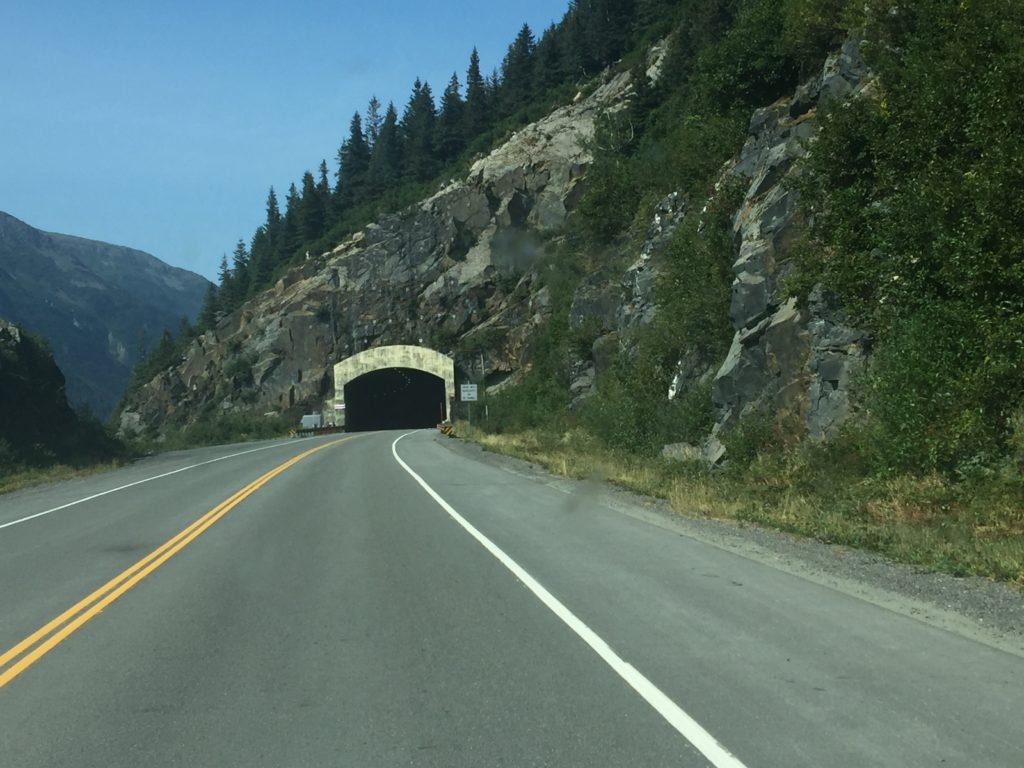
On the way back we stopped for a photo at a waterfall and a nice lunch at Turnagain Arm Pit BBQ. My brisket sandwich was good, but Randy’s Cuban sandwich that was on special was delicious! He said better than Little Havana’s, a favorite of ours in Baltimore. The low-tide views of Turnagain Arm were the best part of our drive. The outgoing tide made unique patterns in the mud. We had been told that we should not walk on the mud, as the silt created quicksand like danger. Randy and I both wished that we could explore as they reminded us of the tidal pools on Assateague; however, after reading about the mud flats they do not compare. These mud-flats have little year-round life forms. Light does not penetrate the silty water so no plants, with the exception of popcorn kelp found along the shoreline, can grow in the arm. The only fish in the arms are migrating salmon and smelt and the only mammals are those seeking to eat the fish. The arm is a very dangerous place to be and I found several articles where people have died getting stuck on the flat when the tide comes in. The silt particles are laid down in a delicate, loosely oriented pattern by waters that carry it into the inlet. When you step in these particles, they resettle into a more tightly packed arrangement, making it more difficult to extract your foot. These super-saturated particles, called glacial flour, are ground up by the glaciers and carried by streams into the inlet; giving those streams their muddy, gray appearance.
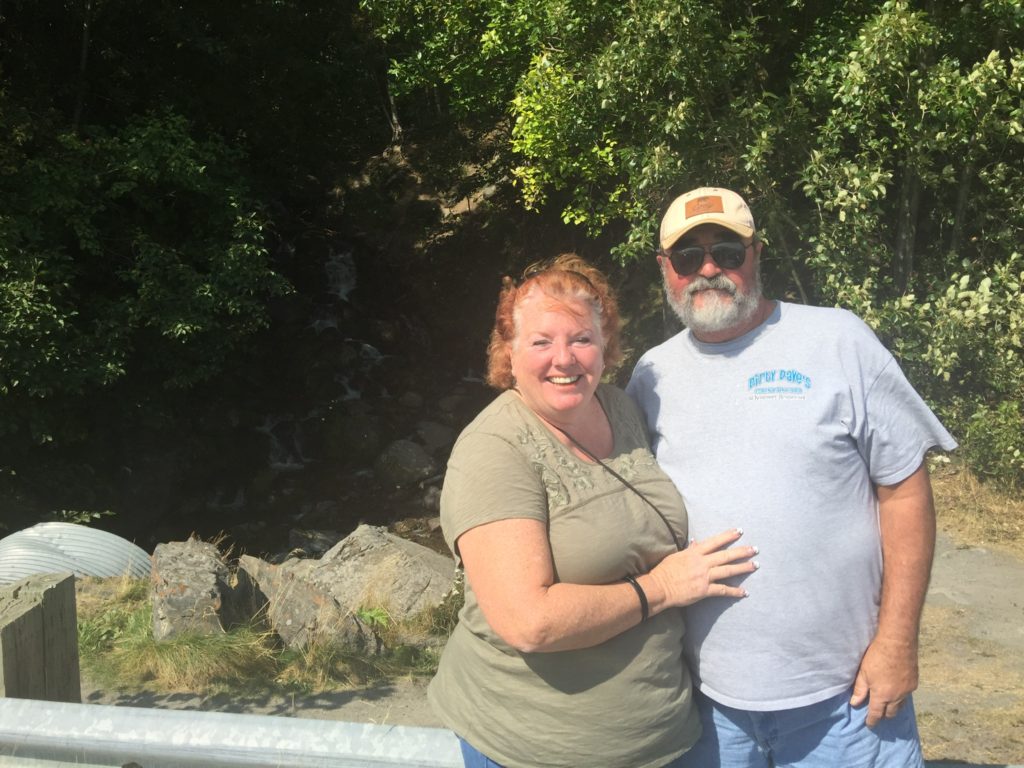
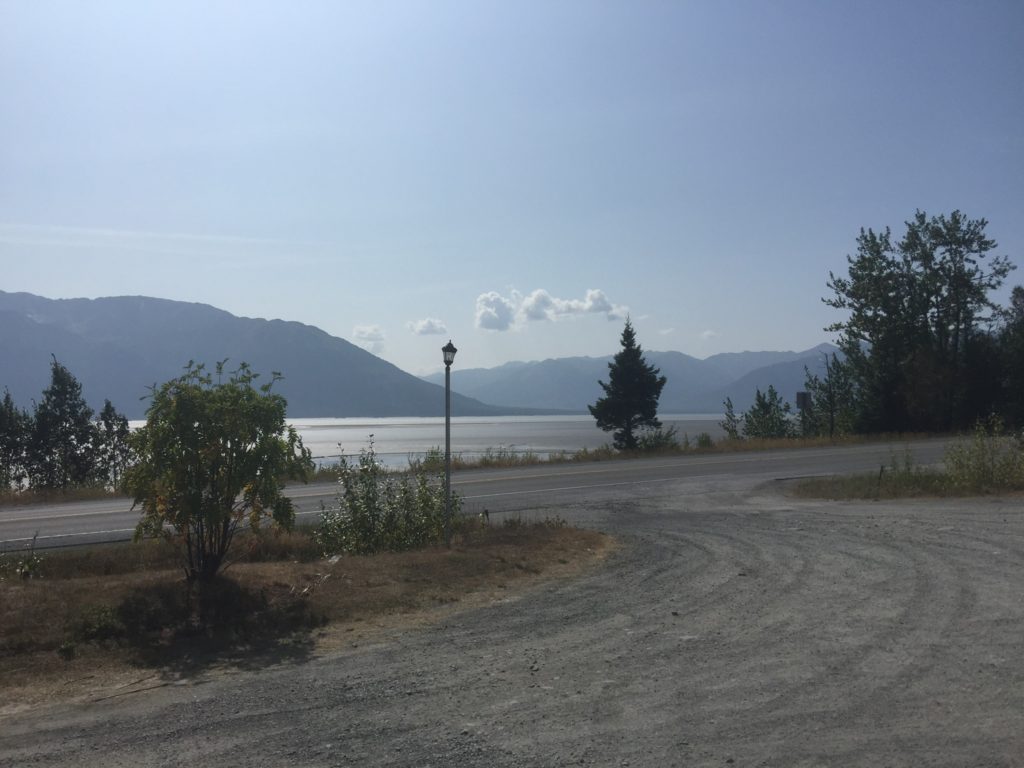
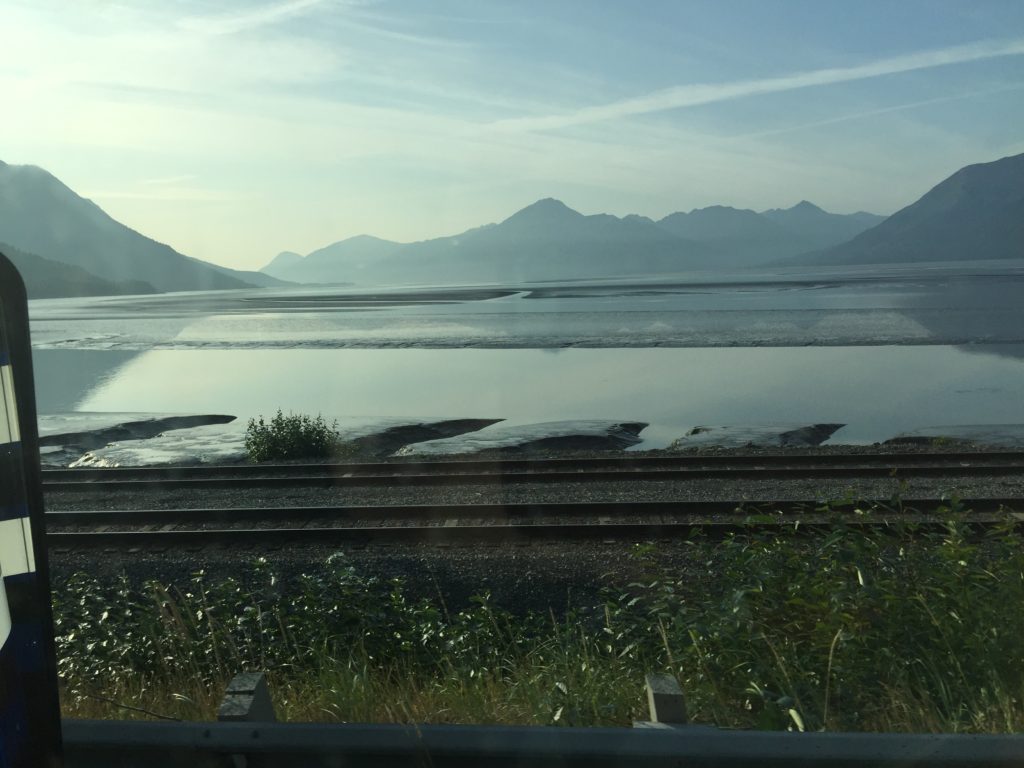
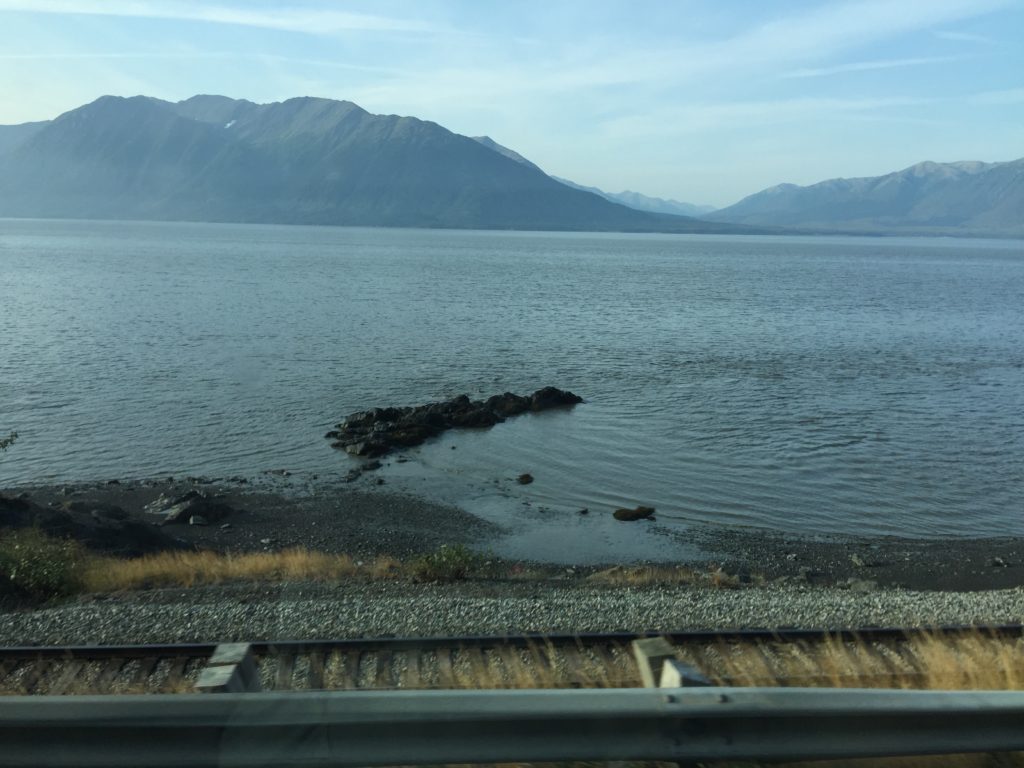
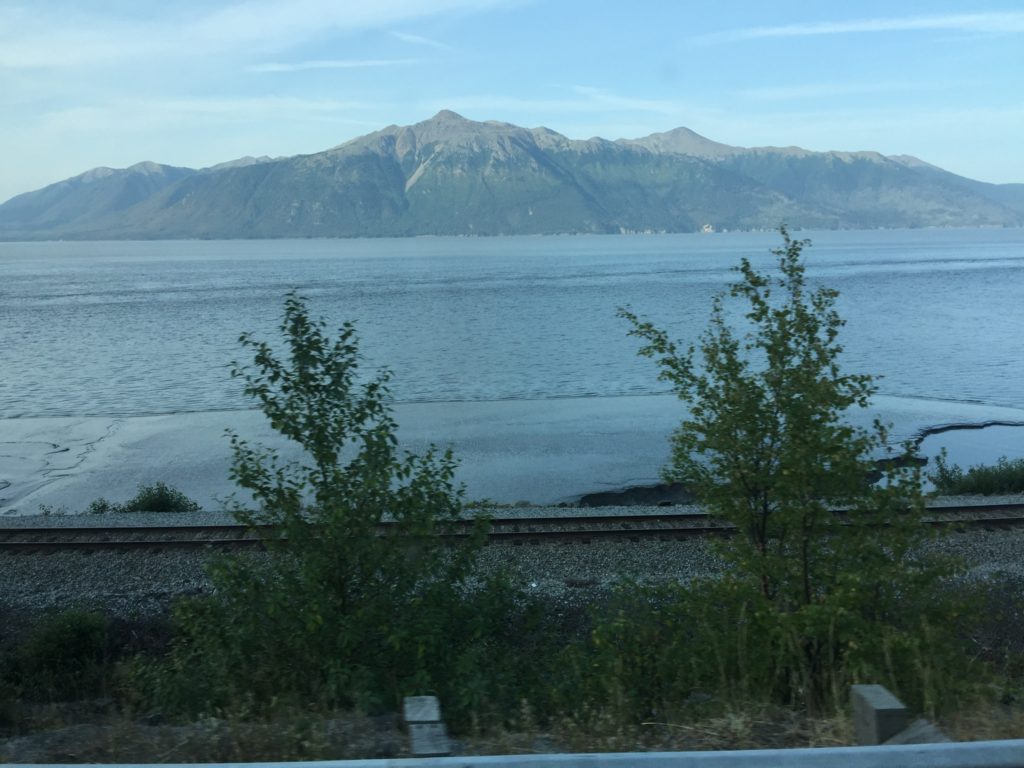
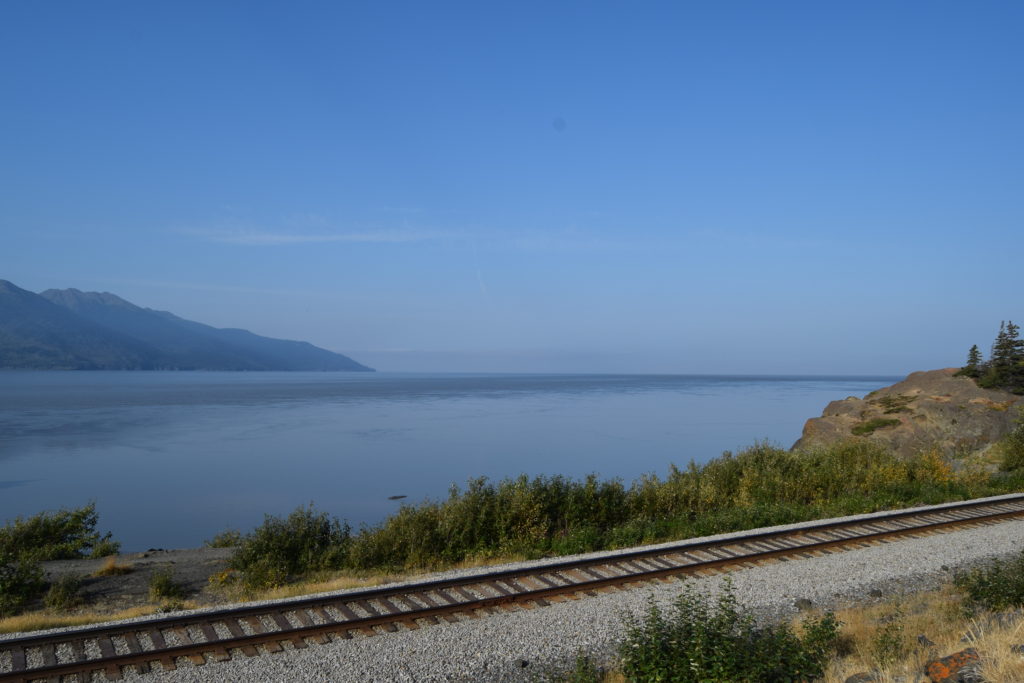
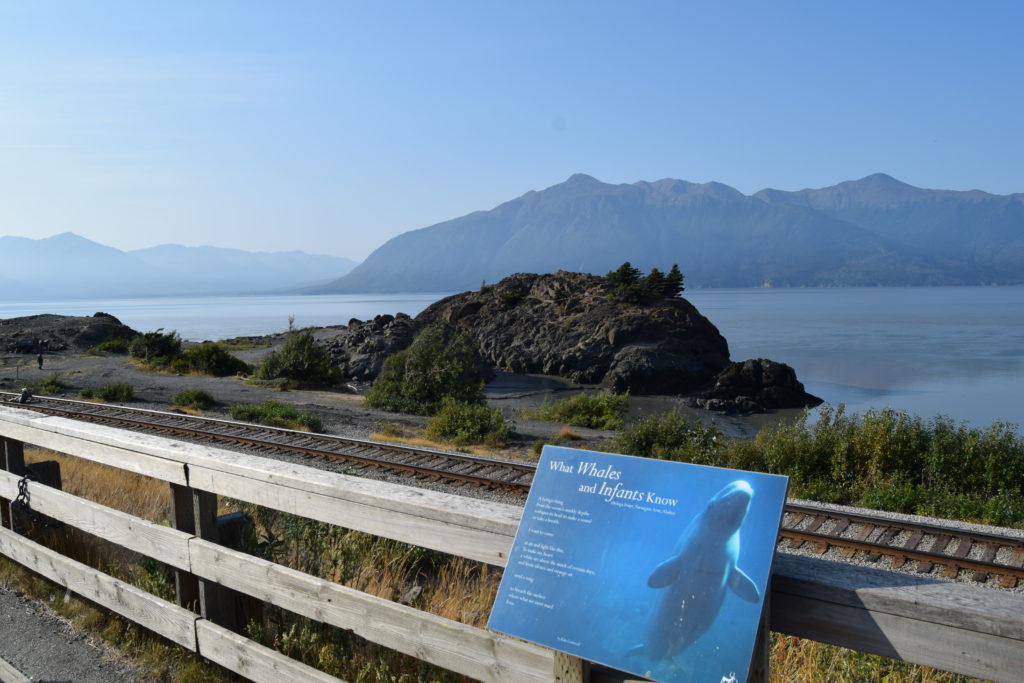
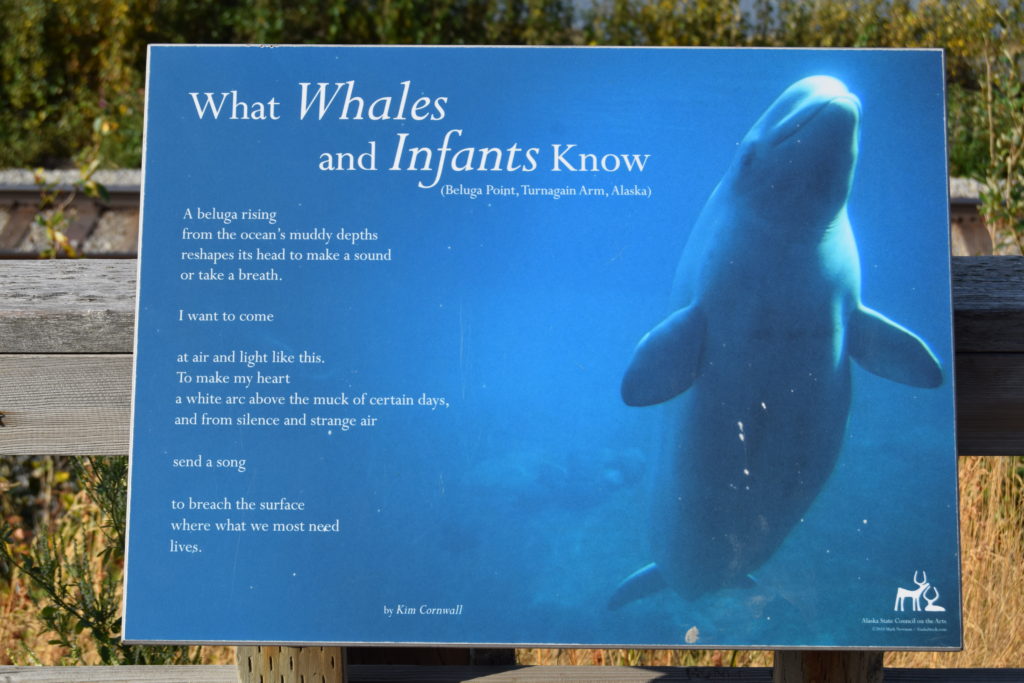
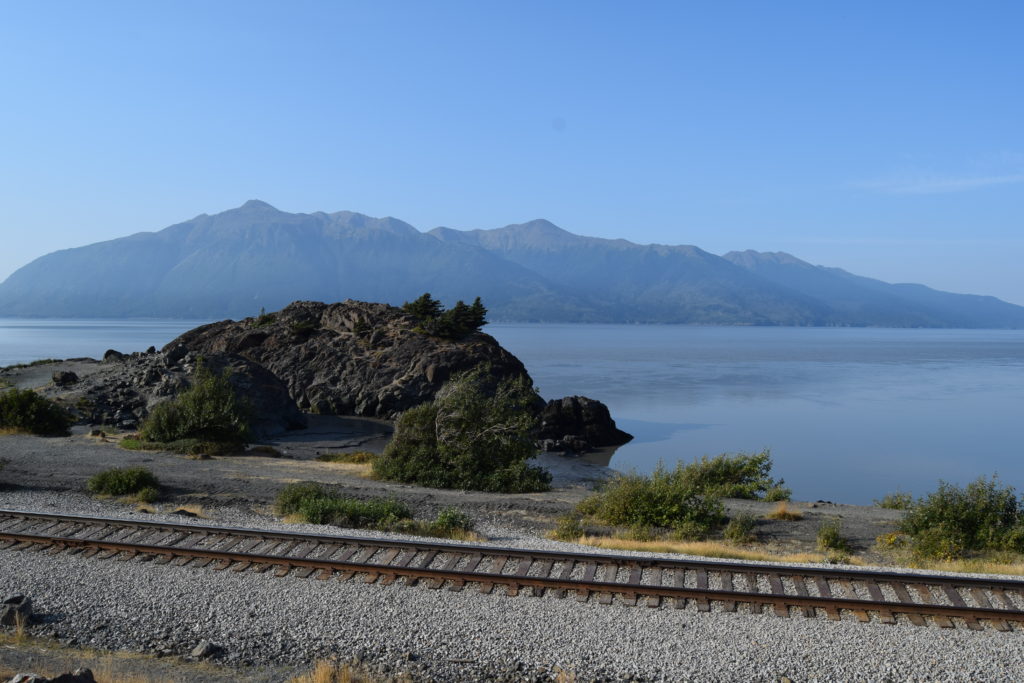
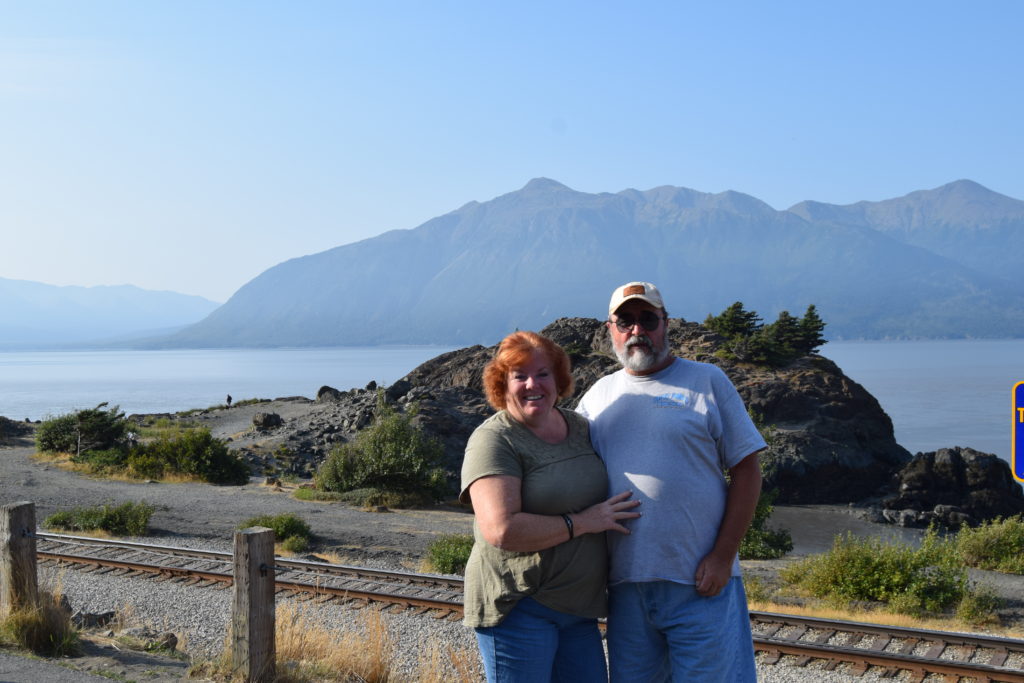
The evening ended with an ice cream social provided by the caravan and the Fantasy Follies. The Follies were a lot of fun where members of the caravan performed any of their talents. Since Randy and I do not have any talent, we did not participate, but several members of the caravan sang, played an instrument, told jokes or put on a skit. It was a lot of fun!
